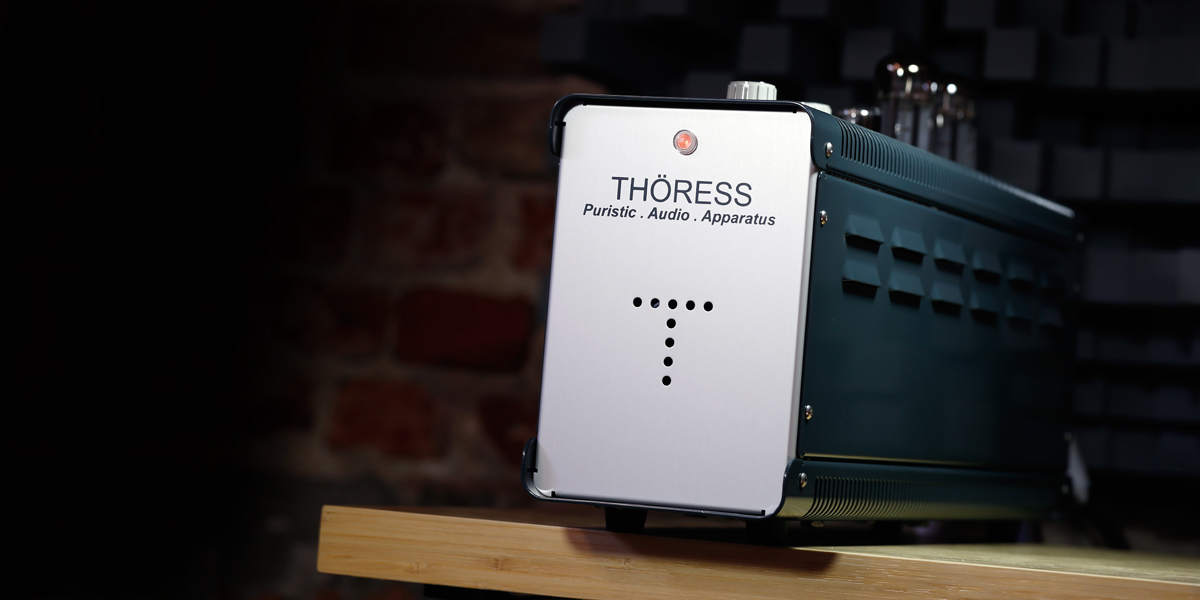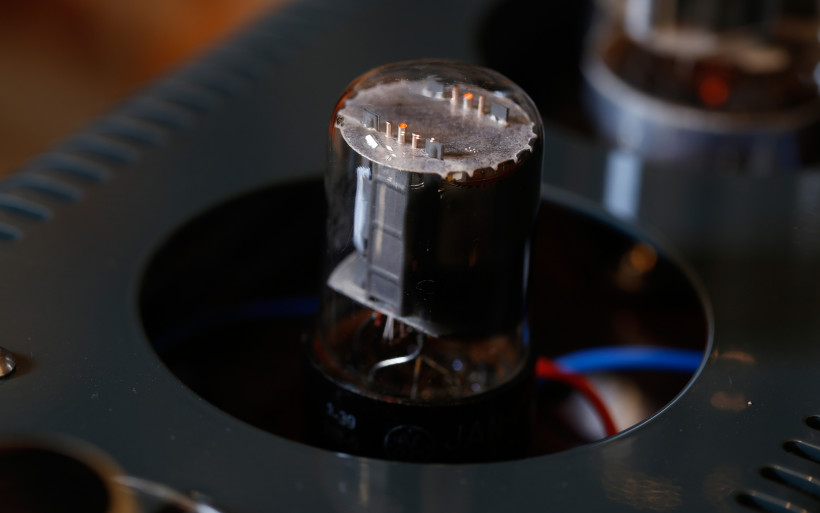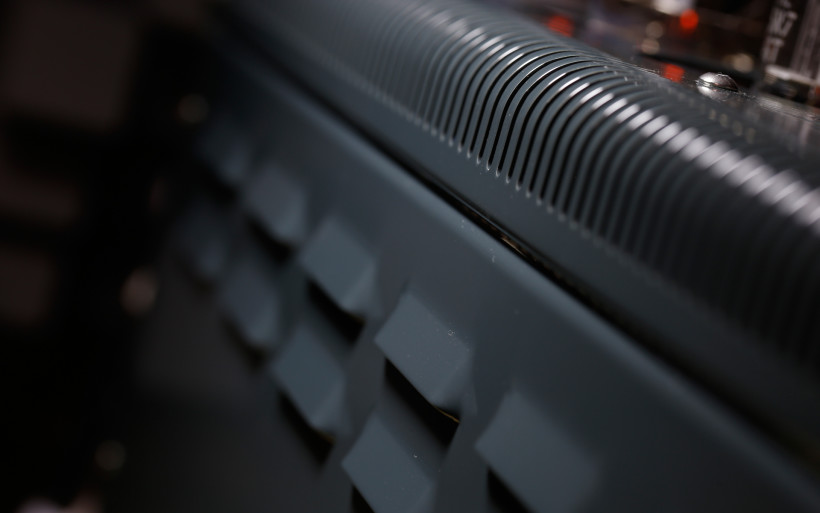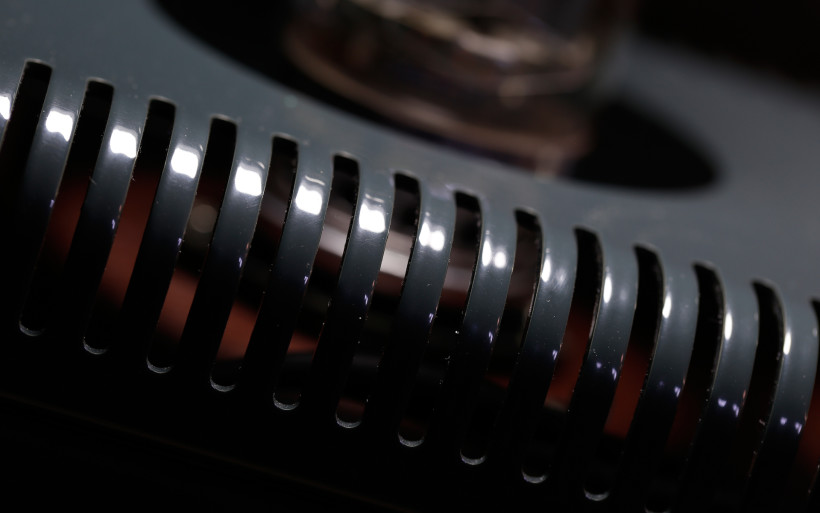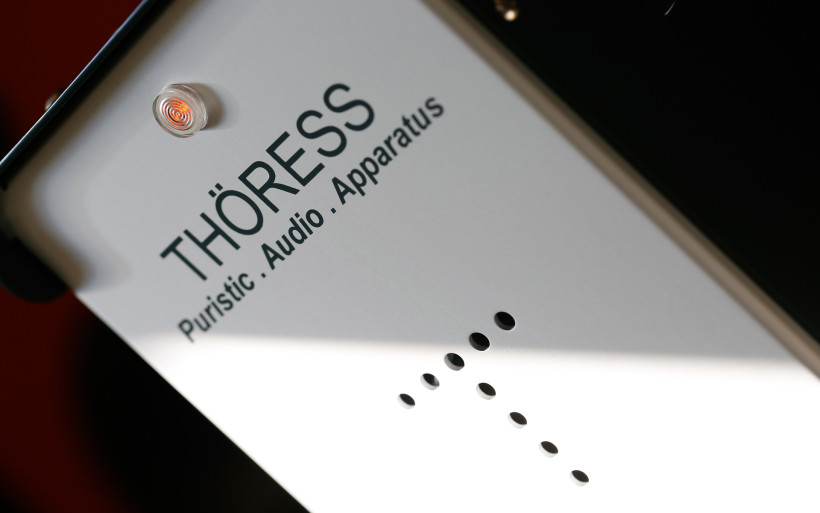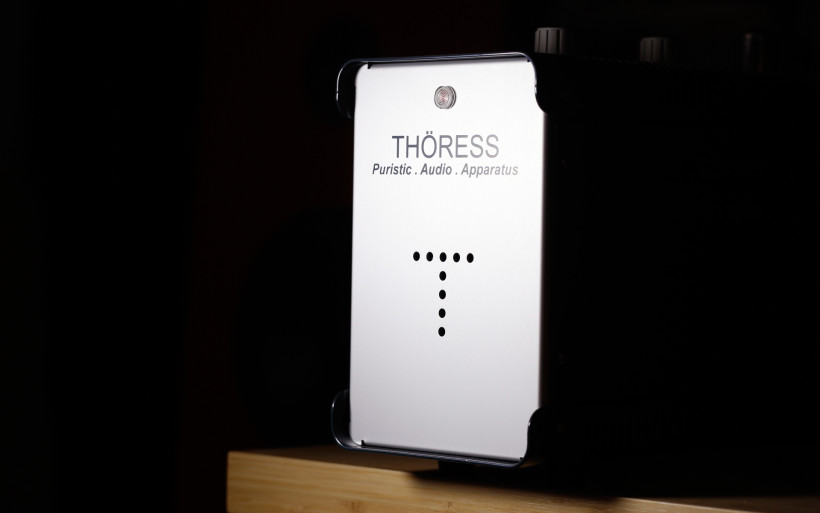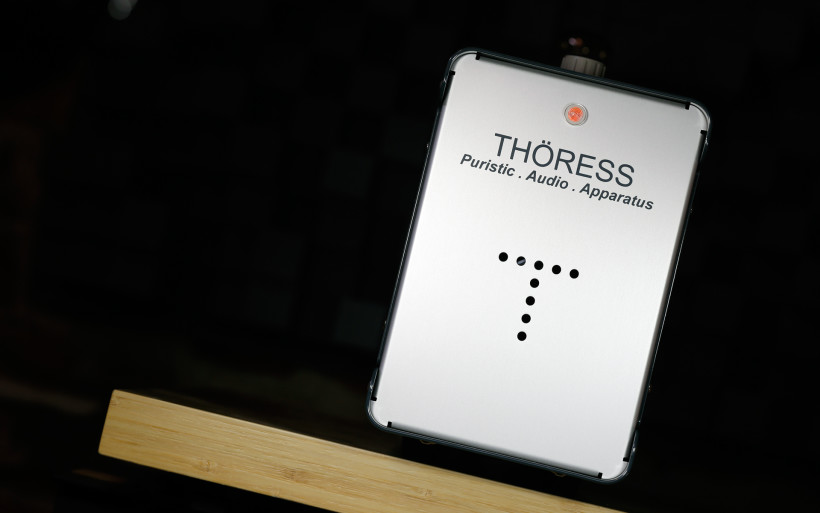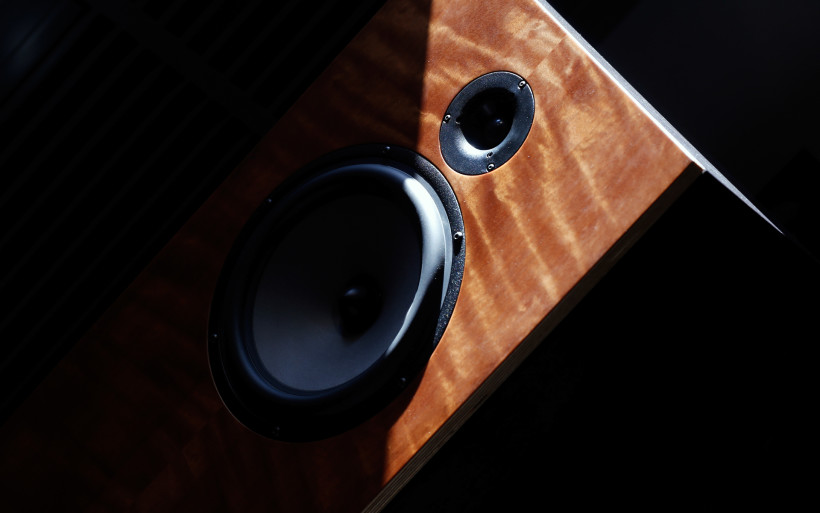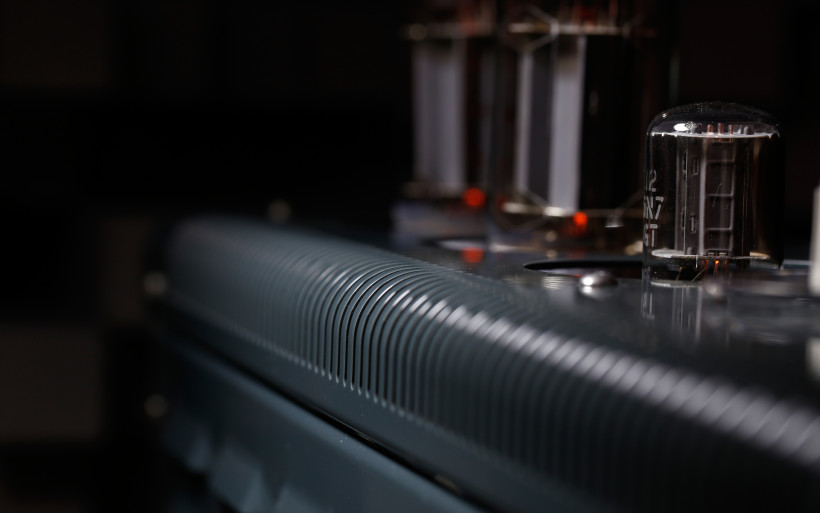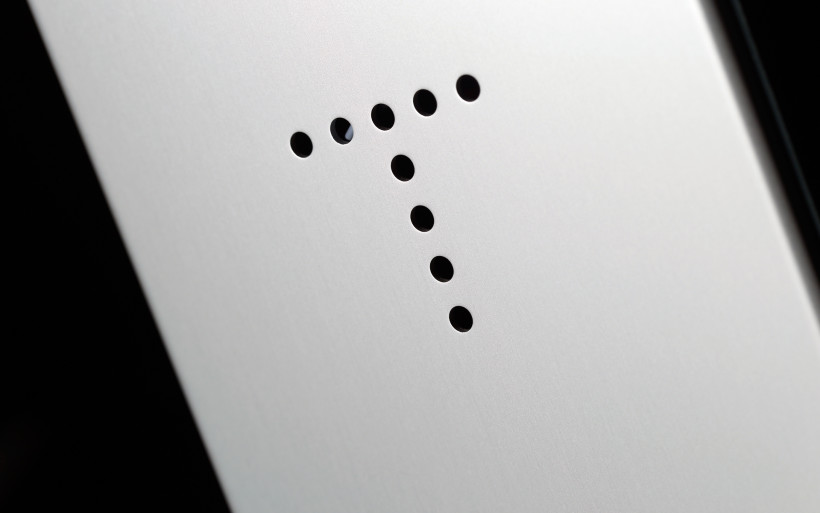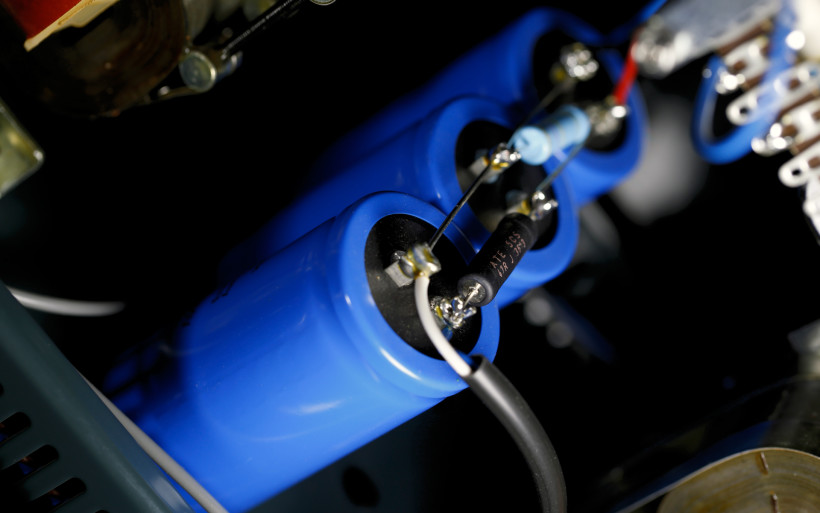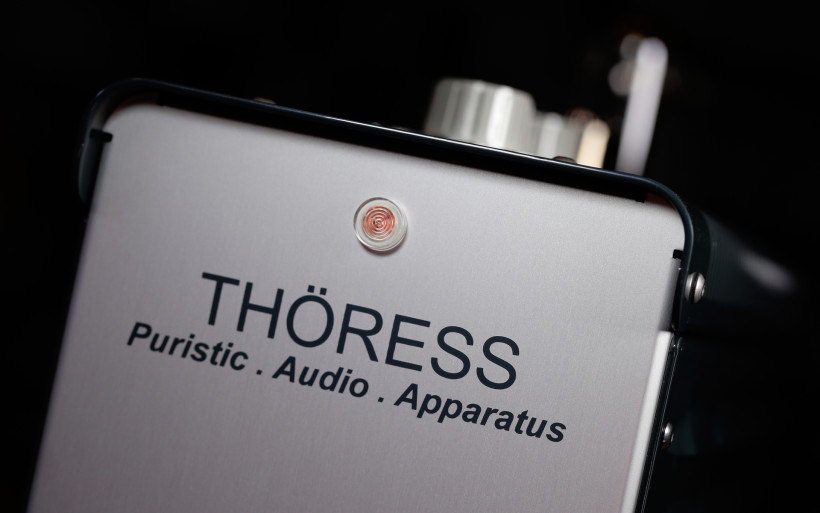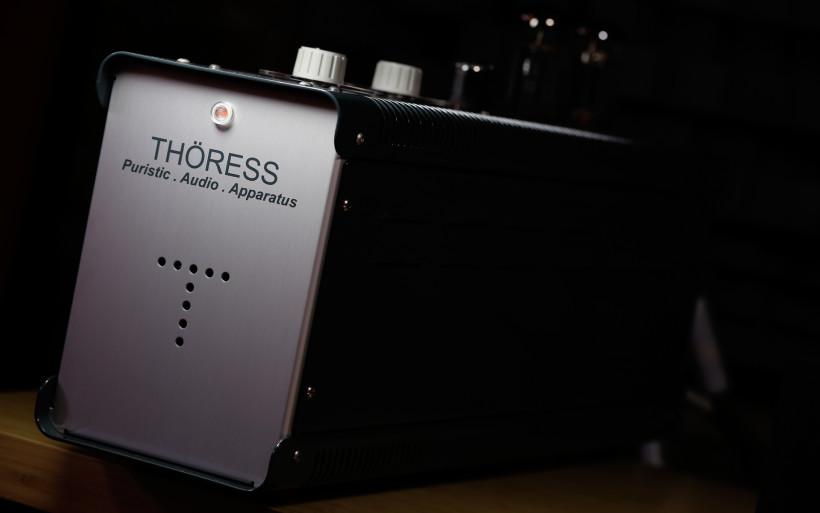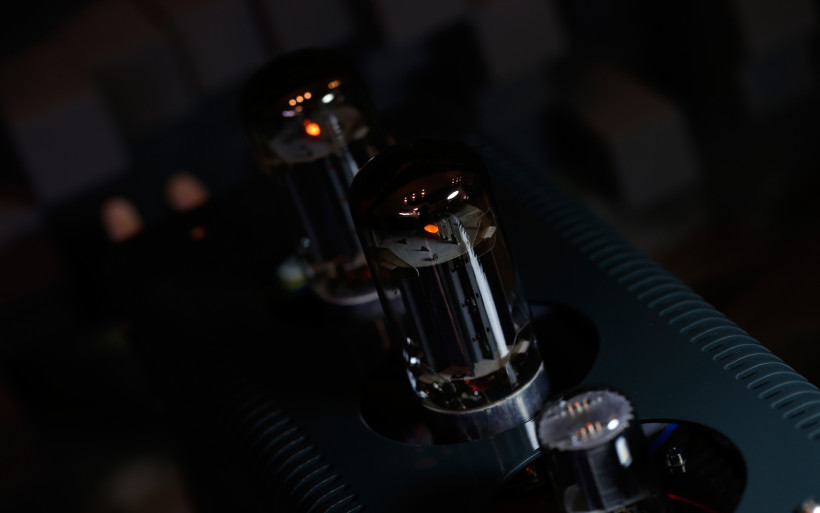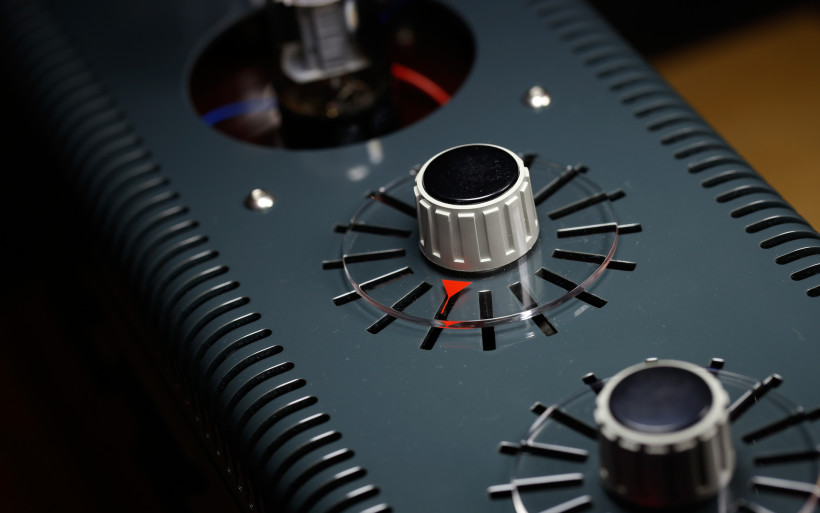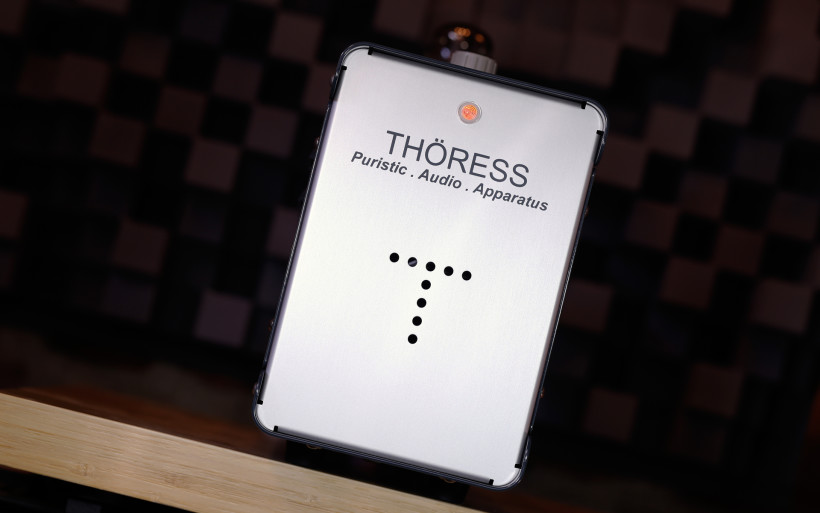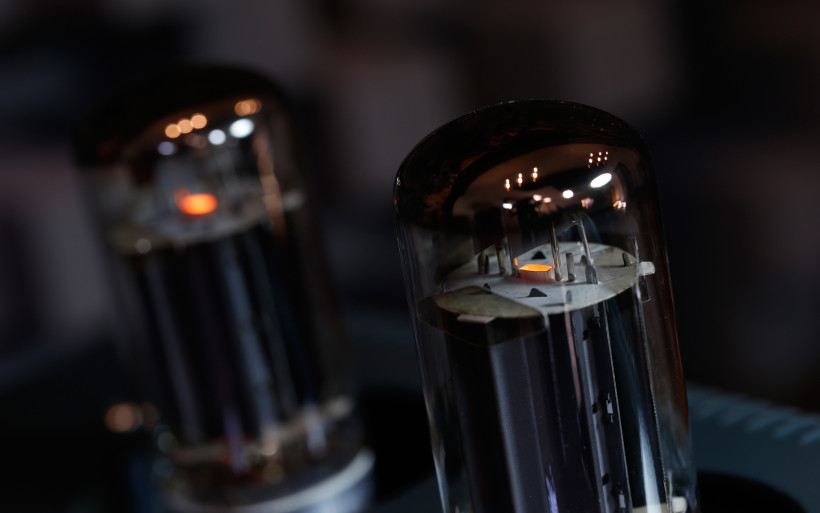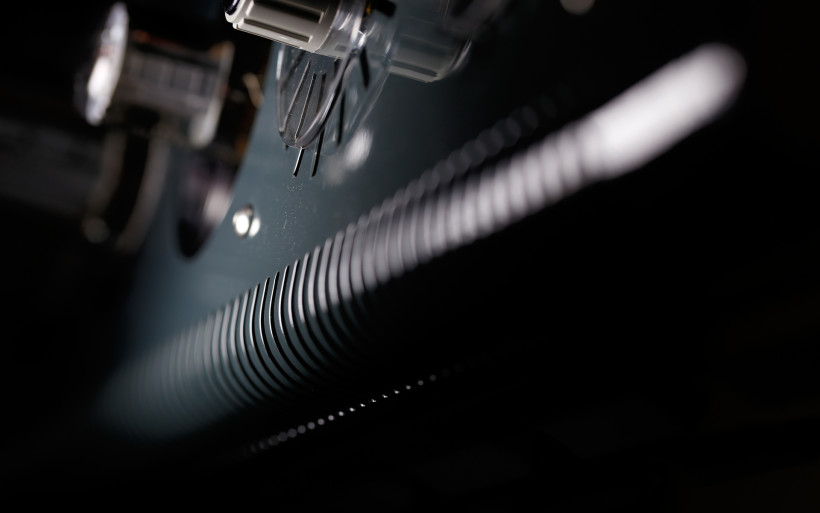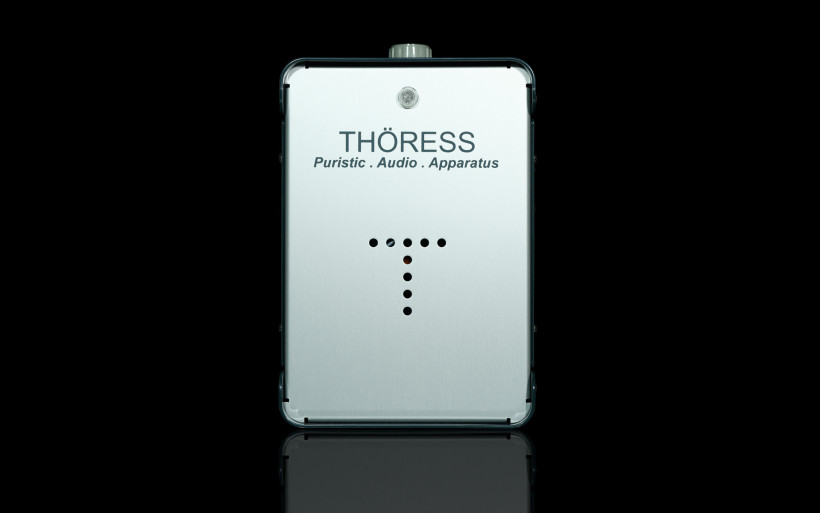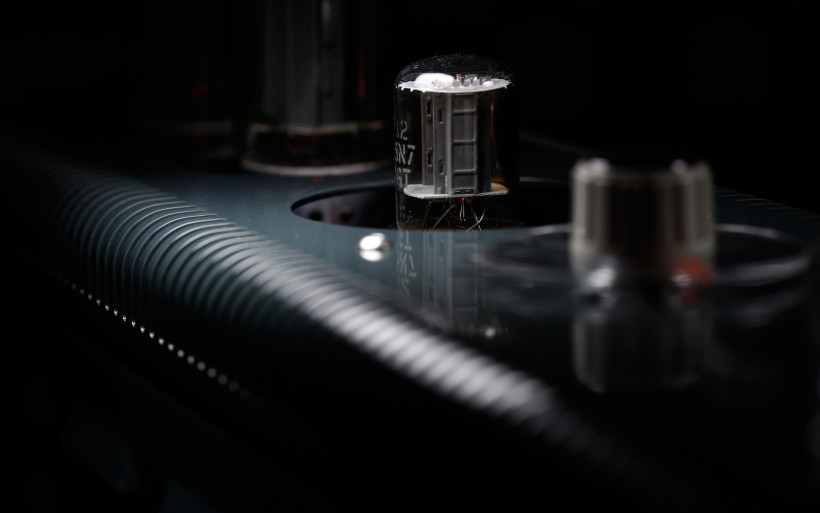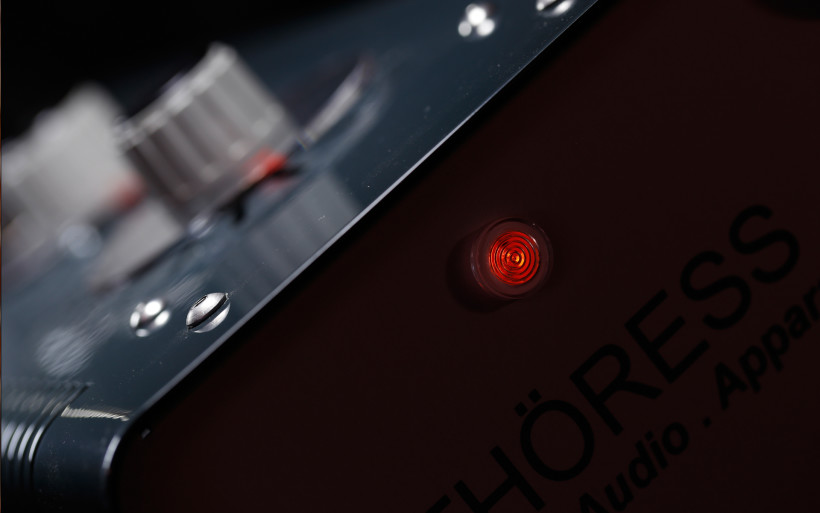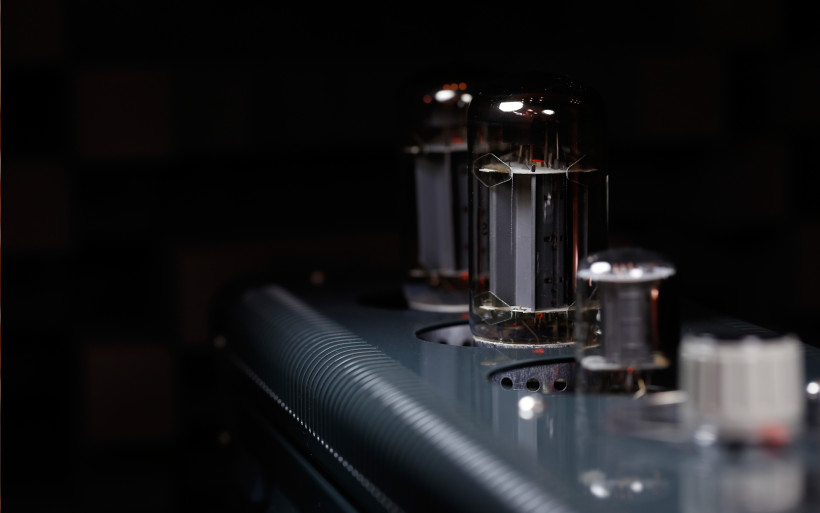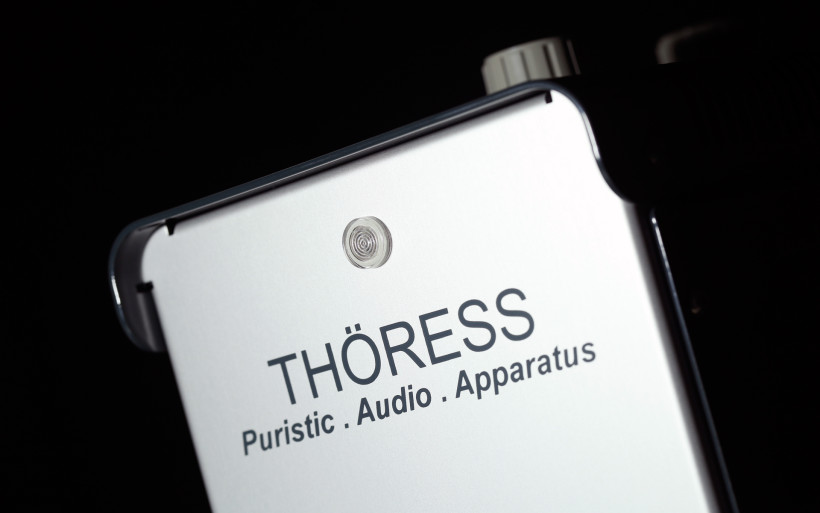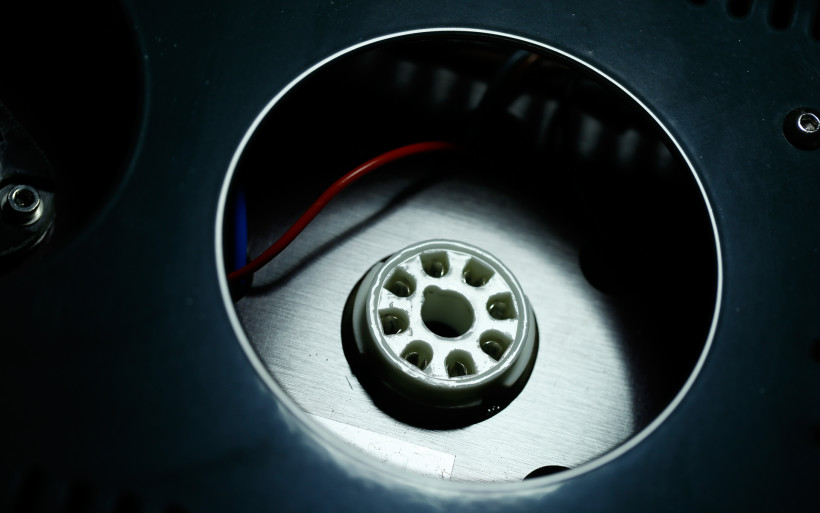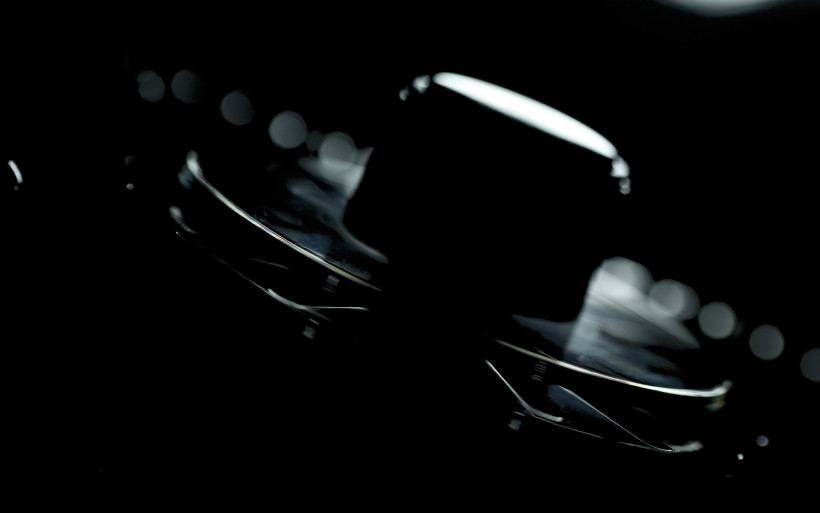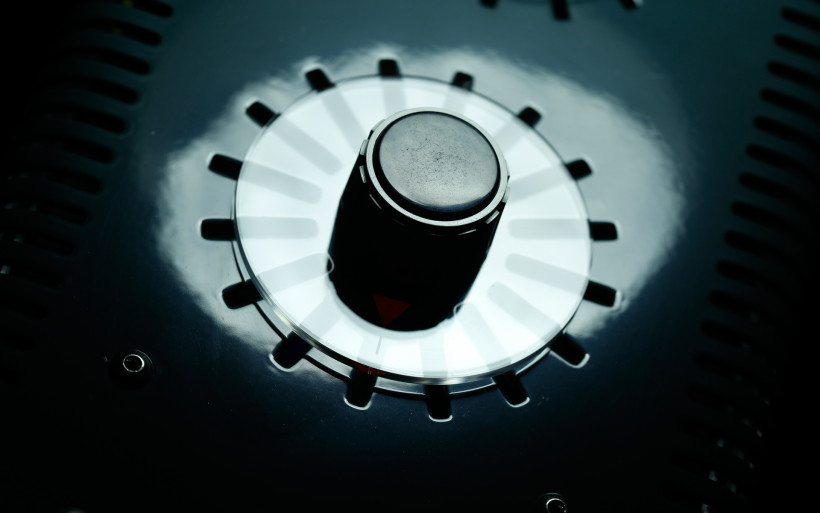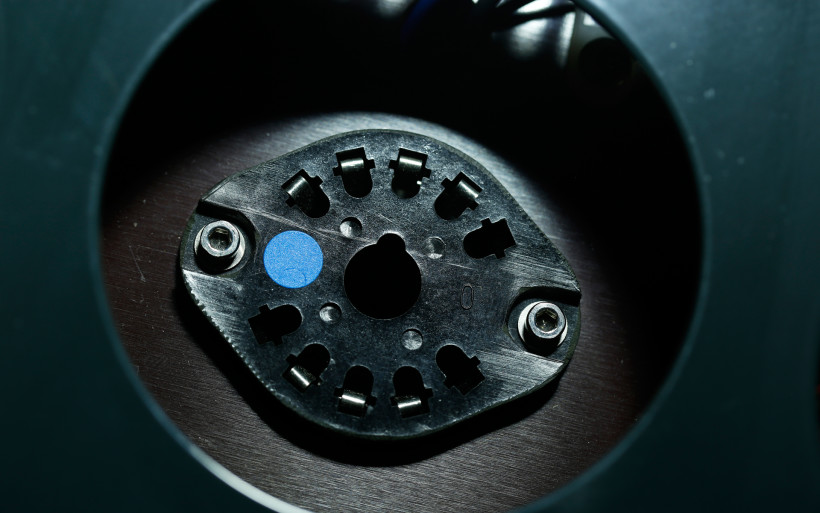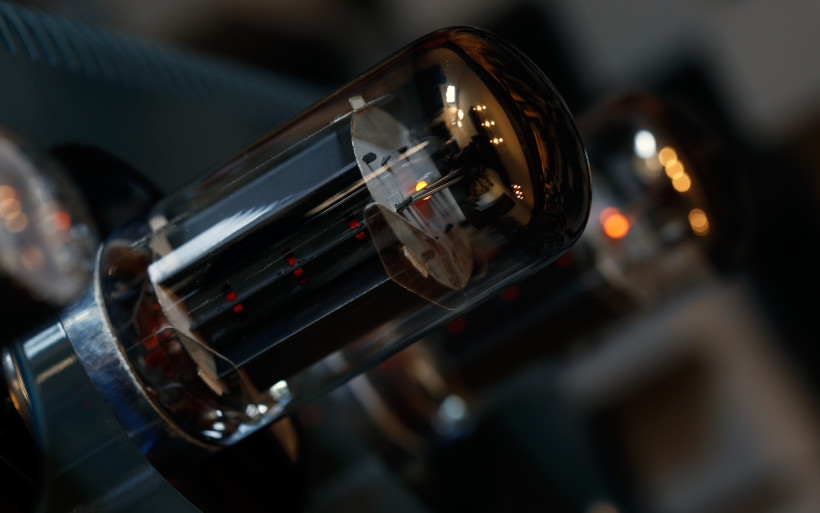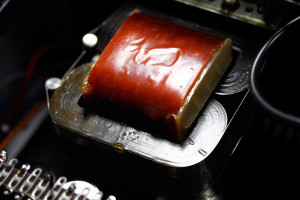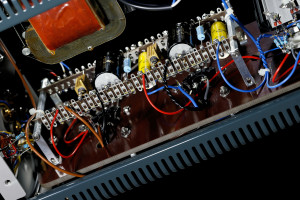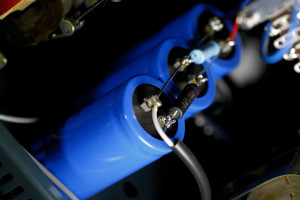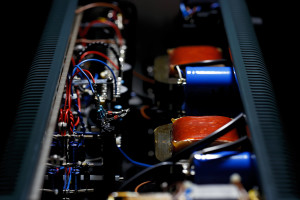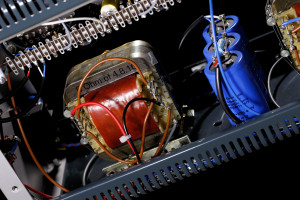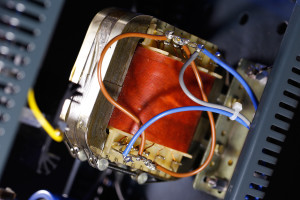German Thöress company is one of those small audio manufactures known mainly to enthusiasts of high calibre. Its owner isn’t into recognition at all. Driven by passion he does his own thing, happy customers handle all the rest and the Thöress word is spread in such fashion for two decades or so. There’s a major catch, though. This mechanism works only when unique products are on the table and to establish whether Thöress F2A11 integrated amp fits the description is this writing’s goal. Enjoy.
Introduction
A quick glimpse at the Thöress portfolio will surely make every SET amplifiers enthusiast to smile widely. There are eight products there now; two preamplifiers (one of which is actually a phonostage), two mono power amplifiers, two loudspeaker models, a pair of integrated amps and one of these – Thöress F2A11 – is this review’s hero. These items’ specs leave no room for guesswork. Large paper membranes, high efficiency, NOS tubes everywhere, ’70s alike (or even earlier) visual aesthetics are the Thöress way by no accident. To make such products for a living is a rare thing these days, a lot of passion has to be undoubtedly involved. One doesn’t do all this to become a millionaire, that’s for sure. The Thöress features one paragraph above indicate quite clearly that this audio boutique’s owner – Reinhard Thöress – is as much into music as he’s a heavyweight audio enthusiast. He has to be, there’s no other way around it, but not into trends or fads. That’s a given but there’s more. I strongly believe that behind each unique, small and successful audio operation there’s both a story to be told and one person in front of the steering wheel. And to know this individual is to understand why he does what he does. This scribe had a pleasure to talk to Reinhard for about two hours or so via phone and – rest assured – it’s quite a story.
The Thöress features one paragraph above indicate quite clearly that this audio boutique’s owner – Reinhard Thöress – is as much into music as he’s a heavyweight audio enthusiast. He has to be, there’s no other way around it, but not into trends or fads. That’s a given but there’s more. I strongly believe that behind each unique, small and successful audio operation there’s both a story to be told and one person in front of the steering wheel. And to know this individual is to understand why he does what he does. This scribe had a pleasure to talk to Reinhard for about two hours or so via phone and – rest assured – it’s quite a story. Since his early childhood, Reinhard Thöress has always been interested in various music; classical, avant-garde, church/organ related, jazz, rock, blues, metal, fusion, funk, soul, disco, pop, world music and so on. It never seemed right to him that a particular music style is more important or valuable than any other and this 50+ gent’s mindset remains unchanged in this regard. According to his subjective opinion, a truly world-class music reproduction system should be designed to be as universal as possible, namely every kind of musical program should be reproduced in equally appealing and convincing way. OK, usually statements of this sort are a marketing jabber and nothing more. Usually, which means that not always. Reinhard’s F2A11 integrated is a very peculiar, unusual performer and in my opinion what he told me makes a perfect sense. Point being, after his deck’s audition with high efficiency speakers, suddenly everything about it became clear to yours truly, understandable and well thought. The moment of enlightenment and perfect awareness happened at some point and it’s scale would make Leonardo DaVinci blush, but to this topic we’ll come back later on.
Since his early childhood, Reinhard Thöress has always been interested in various music; classical, avant-garde, church/organ related, jazz, rock, blues, metal, fusion, funk, soul, disco, pop, world music and so on. It never seemed right to him that a particular music style is more important or valuable than any other and this 50+ gent’s mindset remains unchanged in this regard. According to his subjective opinion, a truly world-class music reproduction system should be designed to be as universal as possible, namely every kind of musical program should be reproduced in equally appealing and convincing way. OK, usually statements of this sort are a marketing jabber and nothing more. Usually, which means that not always. Reinhard’s F2A11 integrated is a very peculiar, unusual performer and in my opinion what he told me makes a perfect sense. Point being, after his deck’s audition with high efficiency speakers, suddenly everything about it became clear to yours truly, understandable and well thought. The moment of enlightenment and perfect awareness happened at some point and it’s scale would make Leonardo DaVinci blush, but to this topic we’ll come back later on.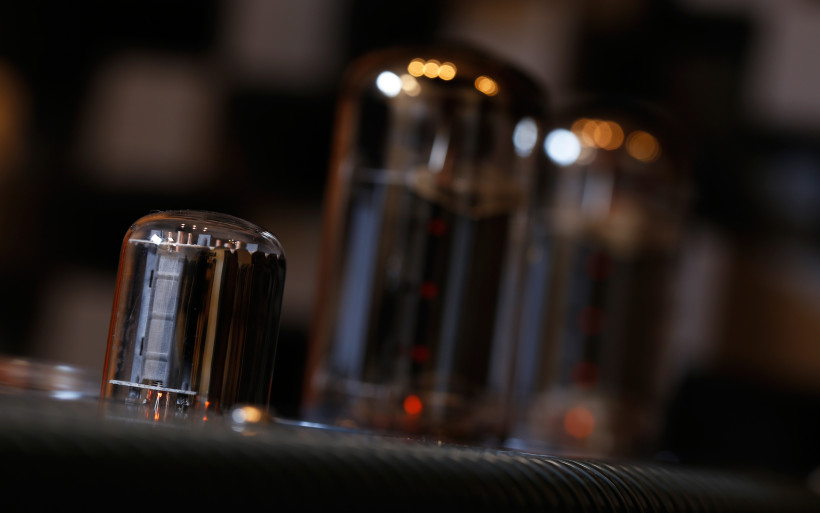 Reinhard Thöress still has vivid memories when as a child he was fortunate to call one of then available rather large tube radios his own. Philips Jupiter 715 happened to be the center of his life at that time. Back then, a device loaded with a 800 ohm oval full rage paper cone speaker, driven by a famous EL86 valve and the so-called iron-less (OTL) output stage invented by Philips, was considered as quite an outstanding piece of audio equipment. Reinhard became aware of what it really was decades later. The Germans had the habit to describe such large tube radios as ‘Musik-Truhe’, which indicated that these were actual pieces of furniture and not only strictly technical devices. Interestingly, the term includes the word ‘music’, yet ‘radio’ is nowhere to be found. Our engineer explained that to him ‘Truhe’ was a bit like ‘Schatz-Truhe’ – a treasure box – and that’s exactly what the Philips 715 was to him, his own beloved treasure box. Filled with gold and precious jewels in the shape of musical tunes, it craved his attention on a daily basis. Reinhard remembers well that he’d exploited the 715 even as a teenager. Even though transistorized audio gear was becoming more and more popular at that time. He’d picked-up piano lessons and this instrument became his favorite. I was told that he plays on it with limitless passion almost every day. As a teenager, he also began to attend to all kinds of live concerts regularly. Within his living area, Reinhard became acquainted with numerous large and small concert halls, opera houses, churches, jazz clubs and so forth. He cherry-picked his preferred places and some of them – as the man himself puts it – offered the highest degree of listening joy.
Reinhard Thöress still has vivid memories when as a child he was fortunate to call one of then available rather large tube radios his own. Philips Jupiter 715 happened to be the center of his life at that time. Back then, a device loaded with a 800 ohm oval full rage paper cone speaker, driven by a famous EL86 valve and the so-called iron-less (OTL) output stage invented by Philips, was considered as quite an outstanding piece of audio equipment. Reinhard became aware of what it really was decades later. The Germans had the habit to describe such large tube radios as ‘Musik-Truhe’, which indicated that these were actual pieces of furniture and not only strictly technical devices. Interestingly, the term includes the word ‘music’, yet ‘radio’ is nowhere to be found. Our engineer explained that to him ‘Truhe’ was a bit like ‘Schatz-Truhe’ – a treasure box – and that’s exactly what the Philips 715 was to him, his own beloved treasure box. Filled with gold and precious jewels in the shape of musical tunes, it craved his attention on a daily basis. Reinhard remembers well that he’d exploited the 715 even as a teenager. Even though transistorized audio gear was becoming more and more popular at that time. He’d picked-up piano lessons and this instrument became his favorite. I was told that he plays on it with limitless passion almost every day. As a teenager, he also began to attend to all kinds of live concerts regularly. Within his living area, Reinhard became acquainted with numerous large and small concert halls, opera houses, churches, jazz clubs and so forth. He cherry-picked his preferred places and some of them – as the man himself puts it – offered the highest degree of listening joy.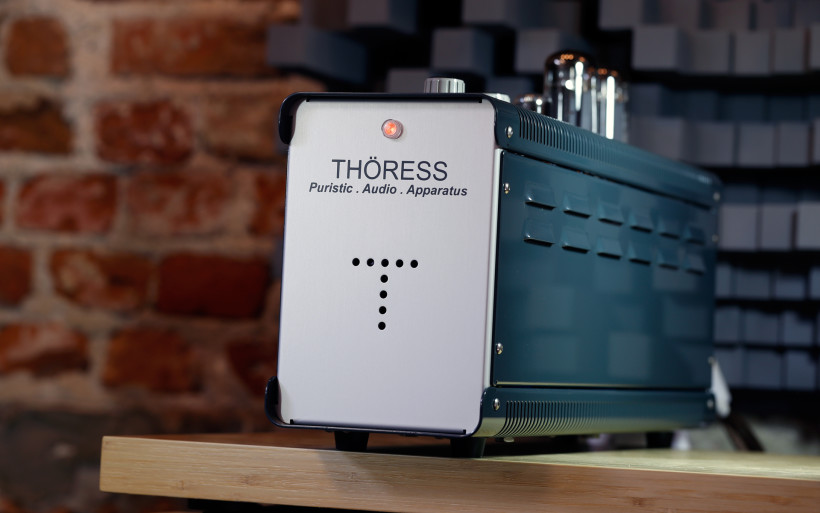 Music wasn’t Reinhard’s only love. To a certain extent he also became interested in musical instruments, science, mathematics, astronomy, technology, technical acoustics and electronics in particular. At the age of 20, arts and design begun to enter the horizon of his interest and that’s probably what’s particular about this gent. Reinhard says that these three equally developed hobbies shaped the brand he created. Our engineer didn’t limit himself to merely one field of interest as he strongly believes that such attitude would narrow his horizon and mindset. His mission is to move in-between the roads given by music, technology and design as he always felt committed to explore each of these three disciplines at their joints.
Music wasn’t Reinhard’s only love. To a certain extent he also became interested in musical instruments, science, mathematics, astronomy, technology, technical acoustics and electronics in particular. At the age of 20, arts and design begun to enter the horizon of his interest and that’s probably what’s particular about this gent. Reinhard says that these three equally developed hobbies shaped the brand he created. Our engineer didn’t limit himself to merely one field of interest as he strongly believes that such attitude would narrow his horizon and mindset. His mission is to move in-between the roads given by music, technology and design as he always felt committed to explore each of these three disciplines at their joints.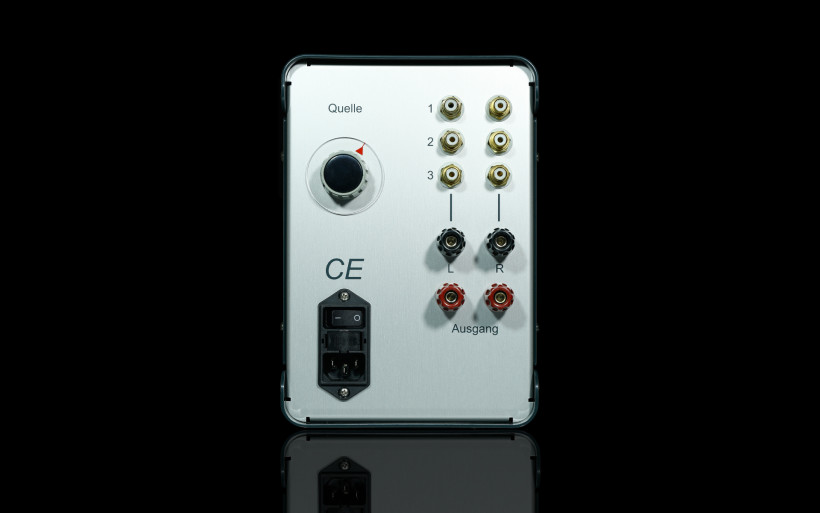 Reinhard graduated in mathematics, whereas physics were the subsidiary subject. Yet he never worked as a professional mathematician, only as an university tutor. He received his degree at RWTH University of Aachen and this very city became both his home town and the residence of Thöress laboratory. The company itself was established some two decades ago, is located in the center of Aachen with the famous cathedral within walking distance. The city itself is inhibited by 250.000 people and located about 50 miles away from Cologne and Düsseldorf, but also very closely to the German border. Right at the spot where German, Belgian and Dutch territories meet.
Reinhard graduated in mathematics, whereas physics were the subsidiary subject. Yet he never worked as a professional mathematician, only as an university tutor. He received his degree at RWTH University of Aachen and this very city became both his home town and the residence of Thöress laboratory. The company itself was established some two decades ago, is located in the center of Aachen with the famous cathedral within walking distance. The city itself is inhibited by 250.000 people and located about 50 miles away from Cologne and Düsseldorf, but also very closely to the German border. Right at the spot where German, Belgian and Dutch territories meet.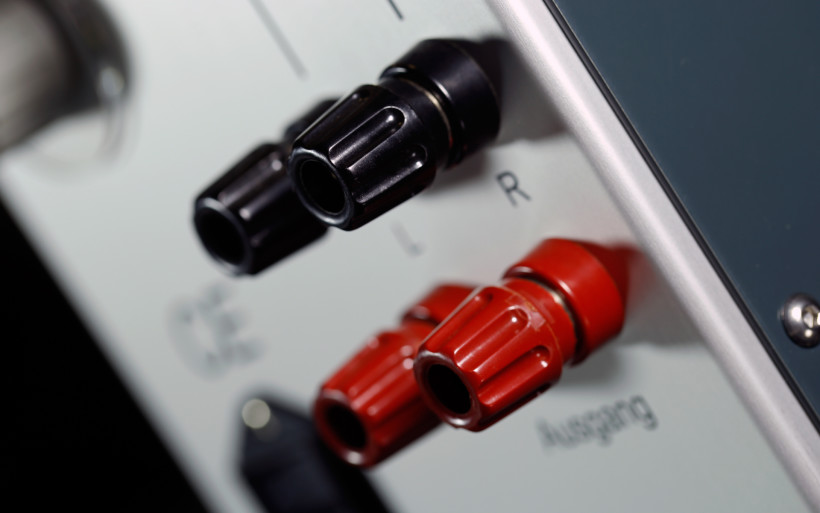 Much in accordance with the multilateral attitude described above, Reinhard doesn’t specialize solely in amplifiers. The Thöress story revolves around both; these items and loudspeakers. Well, this fact seems to be frequently overlooked. Perhaps because German decks make such a strong statement that they steal the spotlight from the speakers Reinhard created? Or is it about the radical, non-mainstream design approach regarding technical principles and/or consternating appearance of his machines? In any case, our designer strongly believes that both amplifiers and speakers are strongly related one to another, hence both need to be treated simultaneously in order to reach the very top musical reproduction. Truth be told, Reinhard’s speakers gained some credit and reputation over the years, which he admittedly notes with a certain degree of pride. He’s simply happy that this part of his work is being more and more recognized and – as a journalist familiar with the feeling – I understand the man.
Much in accordance with the multilateral attitude described above, Reinhard doesn’t specialize solely in amplifiers. The Thöress story revolves around both; these items and loudspeakers. Well, this fact seems to be frequently overlooked. Perhaps because German decks make such a strong statement that they steal the spotlight from the speakers Reinhard created? Or is it about the radical, non-mainstream design approach regarding technical principles and/or consternating appearance of his machines? In any case, our designer strongly believes that both amplifiers and speakers are strongly related one to another, hence both need to be treated simultaneously in order to reach the very top musical reproduction. Truth be told, Reinhard’s speakers gained some credit and reputation over the years, which he admittedly notes with a certain degree of pride. He’s simply happy that this part of his work is being more and more recognized and – as a journalist familiar with the feeling – I understand the man.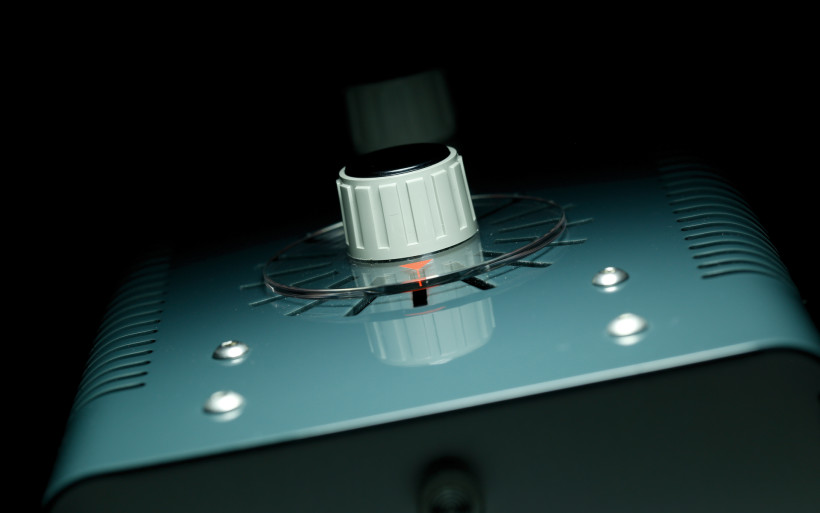 In the context of all above, the picture of a jack of all trades with many successes emerges, yet a master of none. Well, that’s not the case. As Reinhard said via phone, his specialization is where things of a direct influence and impact on sound quality happen, namely purity and consistency of design, carefully selected components and the topology itself. He has a very clear vision of how a ‘musical’ system should sound like and all of his actions are strictly subordinated and ruled by the aforementioned statement. As far as design shenanigans go, he strongly believes in the supremacy of single ended circuitry over balanced affairs, push-pull operations in particular. Needless to say, he avoids the latter and not a single item from the Thöress portfolio is balanced or even loaded with XLR inputs, even for the usability sake. Reinhard also believes that room acoustics is the vital part of the whole puzzle, not merely an accessory and the same story is with audio furniture in general.
In the context of all above, the picture of a jack of all trades with many successes emerges, yet a master of none. Well, that’s not the case. As Reinhard said via phone, his specialization is where things of a direct influence and impact on sound quality happen, namely purity and consistency of design, carefully selected components and the topology itself. He has a very clear vision of how a ‘musical’ system should sound like and all of his actions are strictly subordinated and ruled by the aforementioned statement. As far as design shenanigans go, he strongly believes in the supremacy of single ended circuitry over balanced affairs, push-pull operations in particular. Needless to say, he avoids the latter and not a single item from the Thöress portfolio is balanced or even loaded with XLR inputs, even for the usability sake. Reinhard also believes that room acoustics is the vital part of the whole puzzle, not merely an accessory and the same story is with audio furniture in general.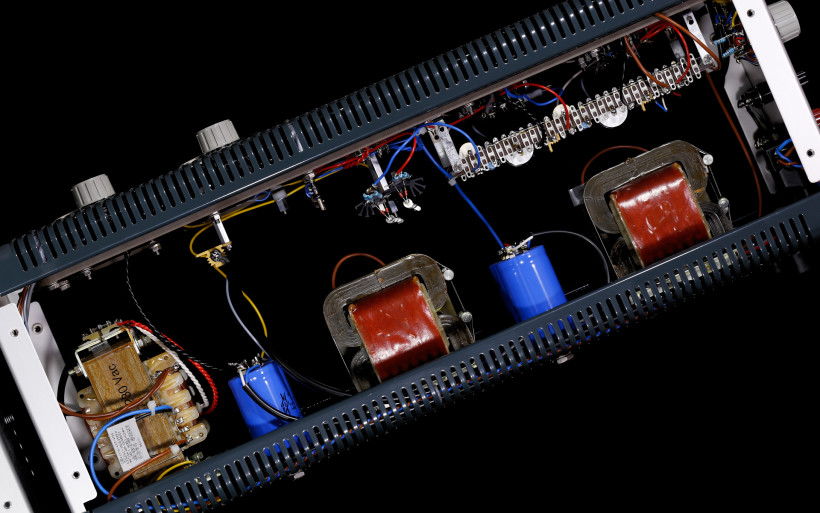 I was also told that the Thöress operation doesn’t revolve around dogmatic tube designs. Reinhard uses the whole palette of ingredients and spices the universe of electronics offers him, of course in order to cook a meal as refined as possible. To translate this into properly technical lingo, he does everything in his power to provide the tubes with optimal operation conditions and then simply lets them to work at their best. Some things are off the menu, though. Reinhard says a big fat ‘no’ to integrated circuits and printed circuit boards, all of ’em are strictly forbidden with one exception – remote control purposes. There’s a number of valid reasons why so, yet this isn’t something Herr Thöress will share or discuss. In any case, point-to-point wiring is his credo in case of all products with the Thöress logo on them.
I was also told that the Thöress operation doesn’t revolve around dogmatic tube designs. Reinhard uses the whole palette of ingredients and spices the universe of electronics offers him, of course in order to cook a meal as refined as possible. To translate this into properly technical lingo, he does everything in his power to provide the tubes with optimal operation conditions and then simply lets them to work at their best. Some things are off the menu, though. Reinhard says a big fat ‘no’ to integrated circuits and printed circuit boards, all of ’em are strictly forbidden with one exception – remote control purposes. There’s a number of valid reasons why so, yet this isn’t something Herr Thöress will share or discuss. In any case, point-to-point wiring is his credo in case of all products with the Thöress logo on them.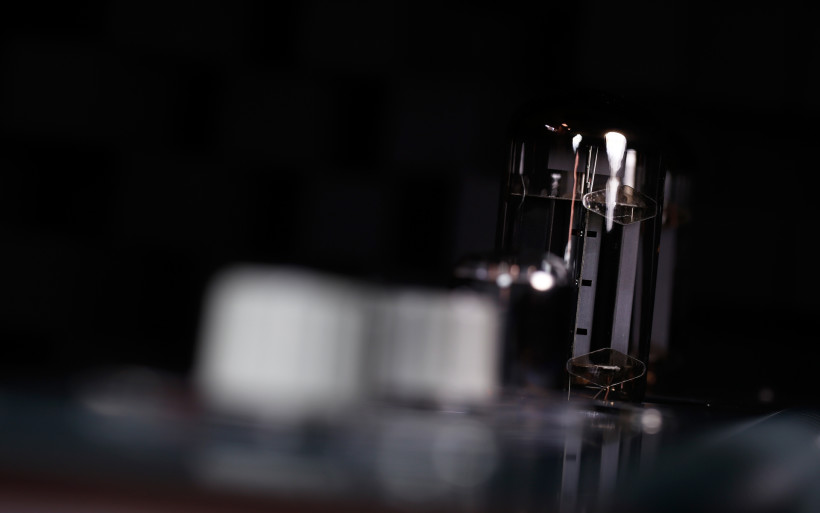 And most importantly, all transformers Reinhard uses are handmade by him directly; output transformers, filter chokes etc., everything executed in the good ‘ol in-house fashion and to the highest possible standards. This engineer also said that his output transformers are certainly among the best products of their kind in the world, whereas OPT unit employed in his 845 monos is probably the most elaborate ever in audio in general. That’s one strong statement, eh? In case of power transformers this means reliability, quiet operation and low leakage field. And lastly, let me emphasize again that Reinhard individually winds all coils himself. If that’s not the case of devotion in our hobby, then I have no idea what is. The tool used for such a virtuous purpose is a vintage Auman machine made in Germany in 1964. Curiously, that’s the year of Reinhard’s birth, which at this point I consider as a very fortunate and quite funny coincidence. Some things obviously were meant to be.
And most importantly, all transformers Reinhard uses are handmade by him directly; output transformers, filter chokes etc., everything executed in the good ‘ol in-house fashion and to the highest possible standards. This engineer also said that his output transformers are certainly among the best products of their kind in the world, whereas OPT unit employed in his 845 monos is probably the most elaborate ever in audio in general. That’s one strong statement, eh? In case of power transformers this means reliability, quiet operation and low leakage field. And lastly, let me emphasize again that Reinhard individually winds all coils himself. If that’s not the case of devotion in our hobby, then I have no idea what is. The tool used for such a virtuous purpose is a vintage Auman machine made in Germany in 1964. Curiously, that’s the year of Reinhard’s birth, which at this point I consider as a very fortunate and quite funny coincidence. Some things obviously were meant to be. In Reinhard’s world, amplifiers, speakers and all other audio components are just tools meant to serve to a committed music lover, to help him broaden his acquaintance. And as such, these can be most valuable tools certainly, but not exploited as status objects or toys to show off in front of big boys. As far as visuals go, no bling-bling is on the table but the form-follows-function approach instead. Such attitude is very clear in Reinhard’s work and – as far as descriptions go – even though ‘a machine’ is a measure sufficient enough, apparatus is more like it. Or the ‘Puristic. Audio. Apparatus.’ according to this gent. It fits even better, though sounds more than just mildly vintage. Still, the task in front of all Thöress devices isn’t to delay and transfigure the glory of the sunken age of tubes. They’re built as a homage and tribute to a great tradition, also felt to be the home of Reinhard’s own approach.
In Reinhard’s world, amplifiers, speakers and all other audio components are just tools meant to serve to a committed music lover, to help him broaden his acquaintance. And as such, these can be most valuable tools certainly, but not exploited as status objects or toys to show off in front of big boys. As far as visuals go, no bling-bling is on the table but the form-follows-function approach instead. Such attitude is very clear in Reinhard’s work and – as far as descriptions go – even though ‘a machine’ is a measure sufficient enough, apparatus is more like it. Or the ‘Puristic. Audio. Apparatus.’ according to this gent. It fits even better, though sounds more than just mildly vintage. Still, the task in front of all Thöress devices isn’t to delay and transfigure the glory of the sunken age of tubes. They’re built as a homage and tribute to a great tradition, also felt to be the home of Reinhard’s own approach.
Build
Thöress F2A11 is an integrated amplifier, which indicates that a preamplifier and a power amp are to be found inside the very same enclosure. Nothing new then, just add a pair of speakers, a CD player or a d/a converter and you’re good to go. Yet it’s more than important that this single-ended triode affair of ‘mere’ 6WPC is in constant sale and unchanged form for 15 years or so and the reason here is simple. To Reinhard, his F2A11 deck is a finished project, case closed.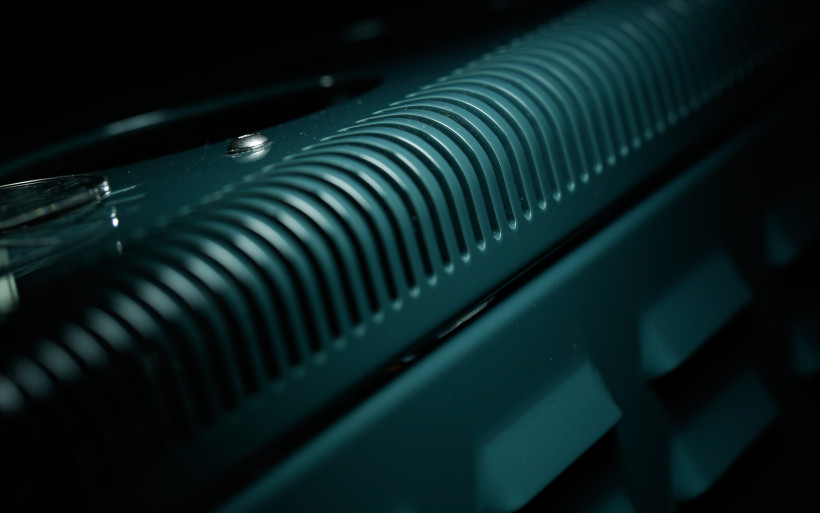 Thöress F2A11 surely isn’t a typically looking deck. Its dimensions (HxWxD) of 26 x 15 x 57.5cm simply make it a tramcar of sort and when this machine’s paint job is included, it resemples one of parts easily found in a tank from Soviet era. Just take a look at the pictures. In any case, two successions follow. In comparison to wide, yet short and not too deep machines manufactured today, finding a place for rather long F2A11 integrated might be somewhat difficult. Some shelves might turn out to be not deep enough, mine barely made it. The good news are that said integrated runs cool and can be safely placed literally anywhere, as long its tubes have some space around ’em. And the second succession of this device’s look is undeniable charm. This long and tall creation surely stands out of the crowd. This is a very subjective topic to discuss, hence I’ll leave it be as is.
Thöress F2A11 surely isn’t a typically looking deck. Its dimensions (HxWxD) of 26 x 15 x 57.5cm simply make it a tramcar of sort and when this machine’s paint job is included, it resemples one of parts easily found in a tank from Soviet era. Just take a look at the pictures. In any case, two successions follow. In comparison to wide, yet short and not too deep machines manufactured today, finding a place for rather long F2A11 integrated might be somewhat difficult. Some shelves might turn out to be not deep enough, mine barely made it. The good news are that said integrated runs cool and can be safely placed literally anywhere, as long its tubes have some space around ’em. And the second succession of this device’s look is undeniable charm. This long and tall creation surely stands out of the crowd. This is a very subjective topic to discuss, hence I’ll leave it be as is.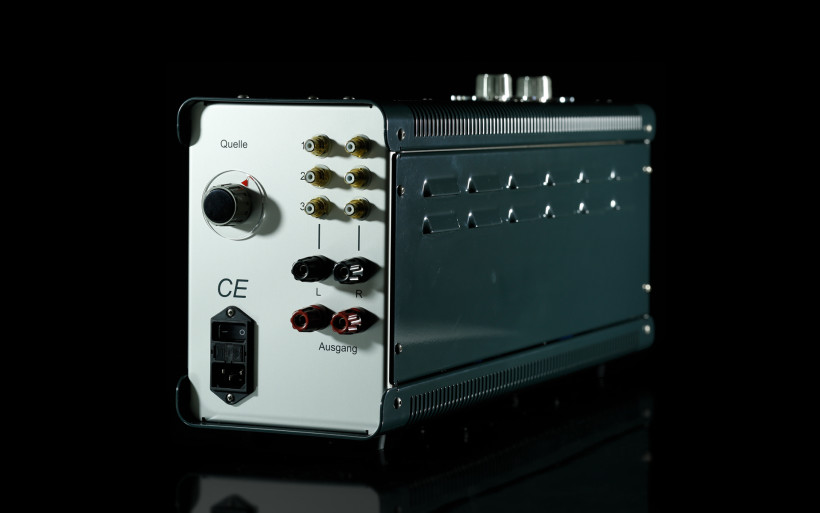 The enclosure itself is made out of six pieces in total. Both its front and back are anodized aluminium panels finished in silver, whereas its both sides, bottom and top have dark green paint job done. This unusual lacquer resembles devices made many decades ago, hence in times when CNC-made aluminium and matte blocks weren’t a thing yet. In addition, F2A11 model’s edges are rounded, which is yet another small detail that makes the whole vintage alike look to be literally omnipresent. Each piece of my loaner’s chassis is assembled via small hex screws and this work’s been done very meticulously. A perfect symmetry is in order, not a single piece protrudes more than it should. Once both sides were removed, not a single issue I’ve encountered to put them back in their place. The usual stuff, right? Wrong. CNC milling should be more precise than our completely handmade F2A11 case, yet it’s not always perfect. Over the years I had a number of issues with the former, usually threads and screws. In comparison, Reinhard’s deck turned out to be superb in this regard.
The enclosure itself is made out of six pieces in total. Both its front and back are anodized aluminium panels finished in silver, whereas its both sides, bottom and top have dark green paint job done. This unusual lacquer resembles devices made many decades ago, hence in times when CNC-made aluminium and matte blocks weren’t a thing yet. In addition, F2A11 model’s edges are rounded, which is yet another small detail that makes the whole vintage alike look to be literally omnipresent. Each piece of my loaner’s chassis is assembled via small hex screws and this work’s been done very meticulously. A perfect symmetry is in order, not a single piece protrudes more than it should. Once both sides were removed, not a single issue I’ve encountered to put them back in their place. The usual stuff, right? Wrong. CNC milling should be more precise than our completely handmade F2A11 case, yet it’s not always perfect. Over the years I had a number of issues with the former, usually threads and screws. In comparison, Reinhard’s deck turned out to be superb in this regard.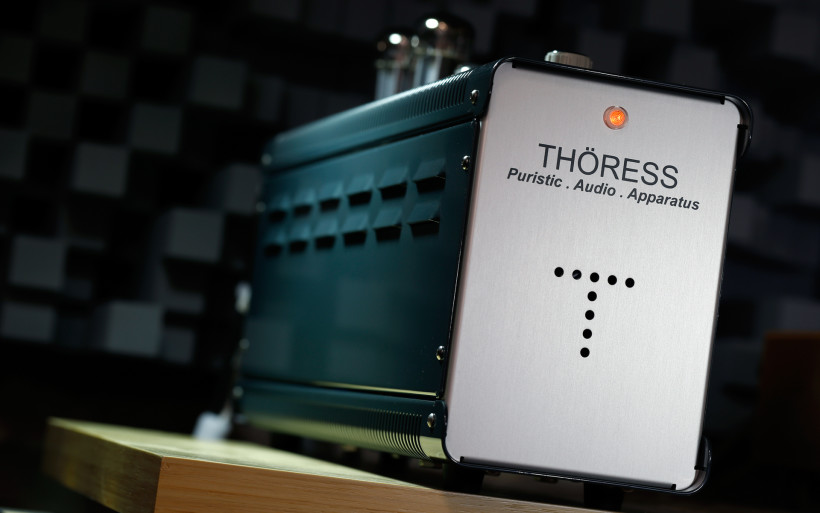 Let’s take a closer look at details of Thöress F2A11. There’s a small red lamp on the upper part of its front. Yes, a lamp and not a diode, which actually marvelously fits the overall presentation of this deck. A bit below there’s a rather large manufacturer’s logo and even lower a short ‘Puristic. Audio. Apparatus.’ writing,which perfectly describes what the F2A11 integrated in fact is. Another small yet tasty thing is a large T-shaped mark, which consists of small holes. Not only it serves as yet another ornament, but also helps out with ventilation a bit. Both top and bottom covers are slightly longer than the product’s frame small peaks are the outcome. Multiple perforations of different shapes are located in several places. Each side plate sports two rows of angled vents, whereas numerous cuts all across the product’s depth are to be found where the enclosure becomes rounded.
Let’s take a closer look at details of Thöress F2A11. There’s a small red lamp on the upper part of its front. Yes, a lamp and not a diode, which actually marvelously fits the overall presentation of this deck. A bit below there’s a rather large manufacturer’s logo and even lower a short ‘Puristic. Audio. Apparatus.’ writing,which perfectly describes what the F2A11 integrated in fact is. Another small yet tasty thing is a large T-shaped mark, which consists of small holes. Not only it serves as yet another ornament, but also helps out with ventilation a bit. Both top and bottom covers are slightly longer than the product’s frame small peaks are the outcome. Multiple perforations of different shapes are located in several places. Each side plate sports two rows of angled vents, whereas numerous cuts all across the product’s depth are to be found where the enclosure becomes rounded.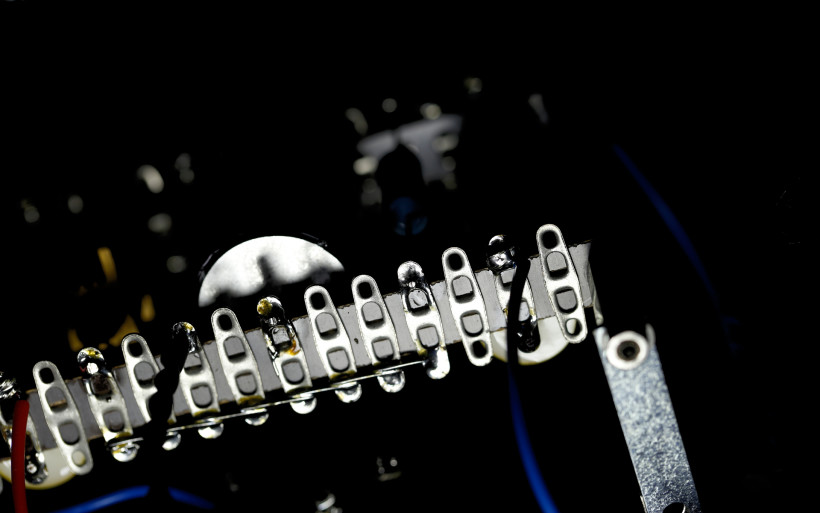 Two large knobs, each with its own acryllic holder, are essentially a volume control. Yes, each channel has its own. And each acryllic part sport a small red arrow, which – along with sixteen cuts placed in a ring visible below – form a handy volume scale. Clever, ain’t it? Here’s where it has to be said that both knobs are very precisely mounted. These sit firmly, need a spot on force to be used and are always in the center. A bit further there’s a 12SN7GT driver tube’s socket and two German F2A11 beam power tetrodes are located nearby, one for each chanel. Since all valves are mounted on our device’s top and there’s a generous amount of space around their sockets, one has a very easy access to these. On the product’s rear there are three gold-plated RCA inputs by Neutrik. The input selector sits very closely and resembles volume knobs. IEC socket down below is loaded with both on/off switch and a self-replaceable fuse. Speaker terminals feel good and do the job, but look rather common. No fancy WBT jewelry anywhere in sight.
Two large knobs, each with its own acryllic holder, are essentially a volume control. Yes, each channel has its own. And each acryllic part sport a small red arrow, which – along with sixteen cuts placed in a ring visible below – form a handy volume scale. Clever, ain’t it? Here’s where it has to be said that both knobs are very precisely mounted. These sit firmly, need a spot on force to be used and are always in the center. A bit further there’s a 12SN7GT driver tube’s socket and two German F2A11 beam power tetrodes are located nearby, one for each chanel. Since all valves are mounted on our device’s top and there’s a generous amount of space around their sockets, one has a very easy access to these. On the product’s rear there are three gold-plated RCA inputs by Neutrik. The input selector sits very closely and resembles volume knobs. IEC socket down below is loaded with both on/off switch and a self-replaceable fuse. Speaker terminals feel good and do the job, but look rather common. No fancy WBT jewelry anywhere in sight.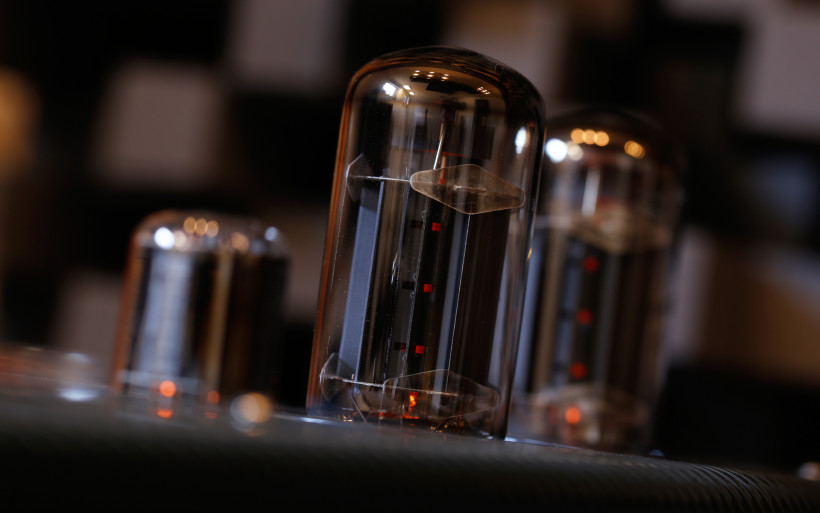 Let’s get back to the venting topic. In short, there’s not a single reason to complain. Shortly past its arrival, my loaner had to be burned-in, hence it’s been on constant duty for several days. No matter how hard the product was pushed, its enclosure was always barely warm. Beam power tetrodes were hot, that’s true and hardly any surprise. But the area around them wasn’t any warmer than any other place. German engineering at its finest? Quite. To take a look inside of our integrated, four hex screws have to be dealt with first, which is a breeze. Innards look peculiar and impressive. Everything’s assembled in point-to-point fashion. Reinhard Thöress despises PCBs and never uses these, one exception aside. Some of his products are equipped with IR volume control modules. Still, he doesn’t buy OEM boards but the ones of his design. And in case of the F2A11 this is irrelevant, simply because this deck’s volume regulation is in one’s legs.
Let’s get back to the venting topic. In short, there’s not a single reason to complain. Shortly past its arrival, my loaner had to be burned-in, hence it’s been on constant duty for several days. No matter how hard the product was pushed, its enclosure was always barely warm. Beam power tetrodes were hot, that’s true and hardly any surprise. But the area around them wasn’t any warmer than any other place. German engineering at its finest? Quite. To take a look inside of our integrated, four hex screws have to be dealt with first, which is a breeze. Innards look peculiar and impressive. Everything’s assembled in point-to-point fashion. Reinhard Thöress despises PCBs and never uses these, one exception aside. Some of his products are equipped with IR volume control modules. Still, he doesn’t buy OEM boards but the ones of his design. And in case of the F2A11 this is irrelevant, simply because this deck’s volume regulation is in one’s legs.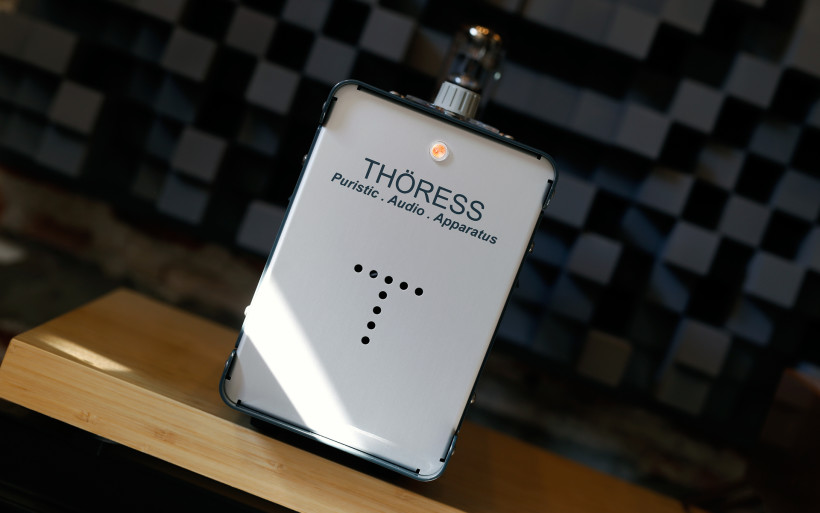 NOS Siemens F2A11 beam power tetrodes work in single-ended triode mode in Reinhard’s integrated. These valves were used in the pro market and are very obscure. German Klangfilm cinemas exploited these in the post II World War era. Reinhard personally measures each of these NOS bulbs and I’ve been told that – once a good batch is bought – 70% of these is usable. But why tetrodes? Because they simply fit perfectly to a given task. Their low internal resistance (Ri) is comparable to 300B tubes. This parameter drastically affects transformer distortion D (indirectly proportional to Ri) and frequency responce (the lower the Ri is, the more extensive the FR) of the power tube stage. In a nutshell, the lower the Ri is, the better. In addition, F2A11’s driving requirements are reduced by a factor of four in comparison to a 300B tube. Four times lower driver distorsion for the same power output than the latter is the outcome.
NOS Siemens F2A11 beam power tetrodes work in single-ended triode mode in Reinhard’s integrated. These valves were used in the pro market and are very obscure. German Klangfilm cinemas exploited these in the post II World War era. Reinhard personally measures each of these NOS bulbs and I’ve been told that – once a good batch is bought – 70% of these is usable. But why tetrodes? Because they simply fit perfectly to a given task. Their low internal resistance (Ri) is comparable to 300B tubes. This parameter drastically affects transformer distortion D (indirectly proportional to Ri) and frequency responce (the lower the Ri is, the more extensive the FR) of the power tube stage. In a nutshell, the lower the Ri is, the better. In addition, F2A11’s driving requirements are reduced by a factor of four in comparison to a 300B tube. Four times lower driver distorsion for the same power output than the latter is the outcome.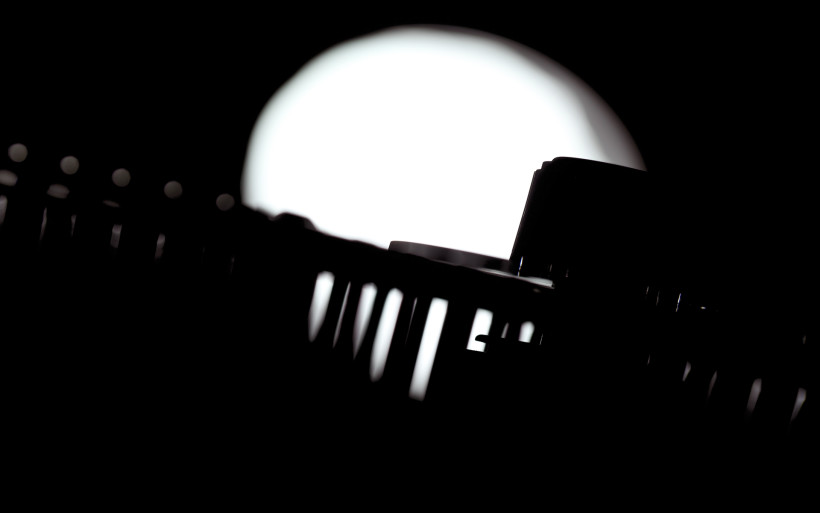 12SN7GT tube is one of the most linear medium-mu triodes ever made, a fact that is generally accepted and has been frequently proven by measurement. In the German integrated it’s operated at quite high idle current, in order to enable the most linear operation mode. For this purpose Reinhard employs a certain type of a custom made transistor which serves as the so-called active load for the driver triodes. Yet how our engineer does this part exactly remains his little secret. The rectification stage is handled by ‘ultra-fast controlled avalanche glass body diode rectifiers’, or custom made transistors in short. Herr Thöress has found these non-boutique, easily available and inexpensive components to be the best for audio applications, particularly in terms of switching noise. Needless to say, he prefers them over vacuum tube rectification both objectively and subjectively. Since these components’ discovery, he never looked back at vacuum tube rectification. As he explained, he’s not into dogmatic tube designs and fitting glass everywhere just because. Next in line are two tape wound C-core output transformers and one power transformer. All of these are handmade in-house by Reinhard himself – even his employees stay away – and mounted to the chassis via flexible dampers. Electrolytic reservoir and filter capacitors and custom made for Thöress a ‘traditional’ German supplier Fisher & Tausche. This company actually delivers electrolytics for Reinhard. In the F2A11 integrated there are no filter chokes but pure cascaded R-C-filtering instead. High tension supply stability is achieved via rather high capacitance values (over 1000 MFD) and low resistances in the filter cascade. Active regulation is off the menu as well and potentiometers are custom made by ALPS in Japan.
12SN7GT tube is one of the most linear medium-mu triodes ever made, a fact that is generally accepted and has been frequently proven by measurement. In the German integrated it’s operated at quite high idle current, in order to enable the most linear operation mode. For this purpose Reinhard employs a certain type of a custom made transistor which serves as the so-called active load for the driver triodes. Yet how our engineer does this part exactly remains his little secret. The rectification stage is handled by ‘ultra-fast controlled avalanche glass body diode rectifiers’, or custom made transistors in short. Herr Thöress has found these non-boutique, easily available and inexpensive components to be the best for audio applications, particularly in terms of switching noise. Needless to say, he prefers them over vacuum tube rectification both objectively and subjectively. Since these components’ discovery, he never looked back at vacuum tube rectification. As he explained, he’s not into dogmatic tube designs and fitting glass everywhere just because. Next in line are two tape wound C-core output transformers and one power transformer. All of these are handmade in-house by Reinhard himself – even his employees stay away – and mounted to the chassis via flexible dampers. Electrolytic reservoir and filter capacitors and custom made for Thöress a ‘traditional’ German supplier Fisher & Tausche. This company actually delivers electrolytics for Reinhard. In the F2A11 integrated there are no filter chokes but pure cascaded R-C-filtering instead. High tension supply stability is achieved via rather high capacitance values (over 1000 MFD) and low resistances in the filter cascade. Active regulation is off the menu as well and potentiometers are custom made by ALPS in Japan.
Sound
In order to review Thöress F2A11, either LampizatOr Golden Gate (Psvane WE101D-L + KR Audio 5U4G Ltd.) or AMR DP-777SE were fed by Foobar2000 loaded Asus UX305LA. 20WPC FirstWatt F7 stereo power amplifier was used this German product’s main opponent. DeVore Fidelity Orangutan O/93 were the main speakers, though one more model was there too. As a DIY work, the latter is without a name yet. Here’s what’s happened.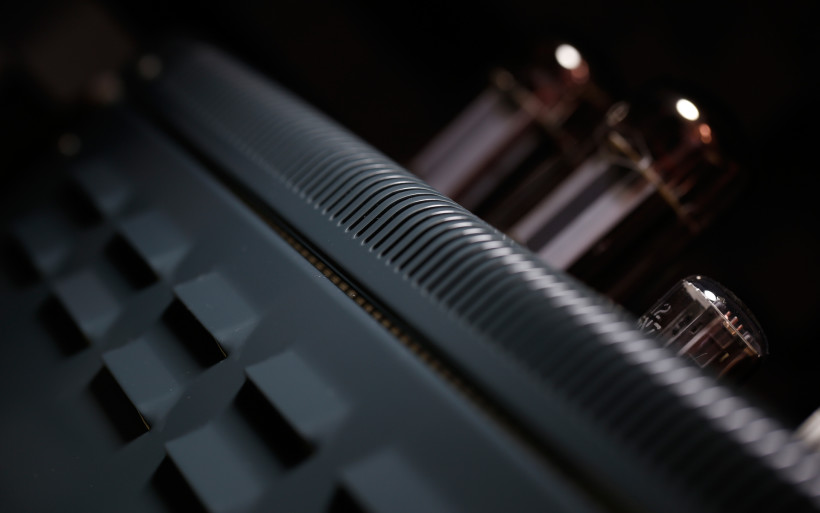 It was quite obvious right from the get-go that none of speakers regularly used by this journalist will get along with the F2A11 model. Xavian Perla monitors, PureAudioProject Trio10 Timeless open baffles and – above all else – reference Boenicke Audio W8 floorstanders were off the menu. Each of these was simply far more amplification demanding to even bother. A very critical need for good high efficiency speakers was on and the local crew of Nautilus shop was nearby to help out. Needless to say, their DeVore Fidelity Orangutan O/93 speakers (93dB/1W/1m and 10Ω of sensitivity and impedance respectively) seemed to be the perfect tool for the job. If it weren’t for these floorstanders, this review wouldn’t have happened. Or at least it would be much more difficult to make.
It was quite obvious right from the get-go that none of speakers regularly used by this journalist will get along with the F2A11 model. Xavian Perla monitors, PureAudioProject Trio10 Timeless open baffles and – above all else – reference Boenicke Audio W8 floorstanders were off the menu. Each of these was simply far more amplification demanding to even bother. A very critical need for good high efficiency speakers was on and the local crew of Nautilus shop was nearby to help out. Needless to say, their DeVore Fidelity Orangutan O/93 speakers (93dB/1W/1m and 10Ω of sensitivity and impedance respectively) seemed to be the perfect tool for the job. If it weren’t for these floorstanders, this review wouldn’t have happened. Or at least it would be much more difficult to make.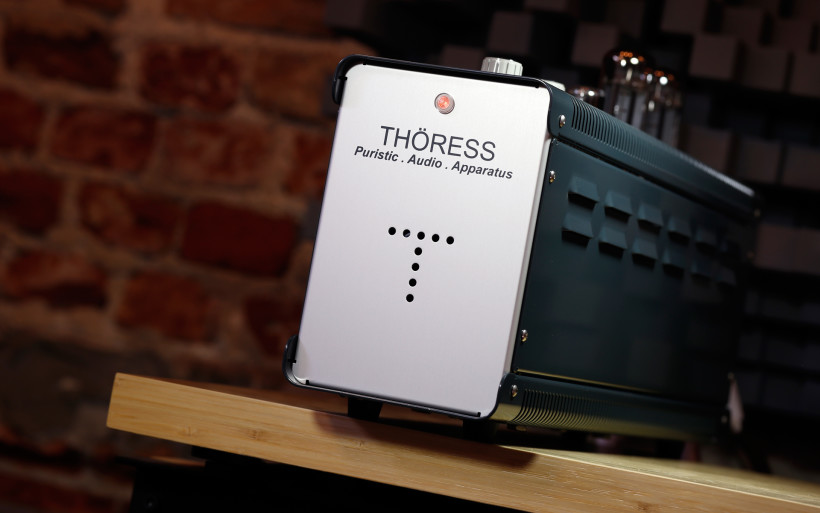 Let’s talk about apes. The Orangutan O/93 model sounds very well bodied, saturated and ductile. This product isn’t plainly hot or warm, though. Its temperature is audibly, yet slightly elevated. But one of the greatest features is the so-called big sound it makes, which translates to the whole wall in front of a listener tightly covered by music. American floorstanders also exhibit scale and strength, they don’t hide behind corners, not at all. Instead these sing ‘here and now’ to please enthusiast’s ears via coherent and admittedly enjoyable projection of well sketched, big and muscular instruments and voices. With Orangutan O/93, large chunks of meat are served on every bone there is, but the whole experience isn’t overwhelming or stuffy in any way. It quickly became clear that the American boxes are a bit too much for my humble 24 sq. meters with rather low ceiling. In any case, it’s not about deep analysis, overly sharp images or precision. These things are surely heard, yet to safe, fatigue-free extent and not further. Texturing, muscle tissue, the above mentioned scale and joy are the attention grabbers instead. Such characteristic says it all then, American floorstanders will get along more than well with amplifiers not only transparent, but also tonally and texturally not overdone and here’s where Thöress F2A11 surprised me for the very first time. Orangutan O/93 is certainly not a slow sounding product, far from it. Yet amps authoritative, namely able to grab a given load by the guts fit perfectly. Our German integrated showed itself from this side as well and with a bang it did.
Let’s talk about apes. The Orangutan O/93 model sounds very well bodied, saturated and ductile. This product isn’t plainly hot or warm, though. Its temperature is audibly, yet slightly elevated. But one of the greatest features is the so-called big sound it makes, which translates to the whole wall in front of a listener tightly covered by music. American floorstanders also exhibit scale and strength, they don’t hide behind corners, not at all. Instead these sing ‘here and now’ to please enthusiast’s ears via coherent and admittedly enjoyable projection of well sketched, big and muscular instruments and voices. With Orangutan O/93, large chunks of meat are served on every bone there is, but the whole experience isn’t overwhelming or stuffy in any way. It quickly became clear that the American boxes are a bit too much for my humble 24 sq. meters with rather low ceiling. In any case, it’s not about deep analysis, overly sharp images or precision. These things are surely heard, yet to safe, fatigue-free extent and not further. Texturing, muscle tissue, the above mentioned scale and joy are the attention grabbers instead. Such characteristic says it all then, American floorstanders will get along more than well with amplifiers not only transparent, but also tonally and texturally not overdone and here’s where Thöress F2A11 surprised me for the very first time. Orangutan O/93 is certainly not a slow sounding product, far from it. Yet amps authoritative, namely able to grab a given load by the guts fit perfectly. Our German integrated showed itself from this side as well and with a bang it did. As far as valve based amplifiers go, there’s a certain stereotype. Soundwise these are often times said to be full of harmonics, hence warm and pleasant, at times slow, not really resolving, midrange oriented and focused on sheer pleasure delivery above all else. Some of them do sound in such way. Though loaded with tetrodes set in DHT mode, Thöress F2A11 doesn’t fit this profile. Heck, it’s as far from fuzzy and syrupy aesthetics as possible. And the longer this German deck is on, the more impressive it becomes. Yet this time around the accommodation period is very short, the F2A11 integrated doesn’t need hours of work for one’s full attention. Reinhard’s machine gets the job done quickly, it sings fabulously right from the start and I’d lie by saying that it’s not impressive. It is and on many levels. Let me elaborate.
As far as valve based amplifiers go, there’s a certain stereotype. Soundwise these are often times said to be full of harmonics, hence warm and pleasant, at times slow, not really resolving, midrange oriented and focused on sheer pleasure delivery above all else. Some of them do sound in such way. Though loaded with tetrodes set in DHT mode, Thöress F2A11 doesn’t fit this profile. Heck, it’s as far from fuzzy and syrupy aesthetics as possible. And the longer this German deck is on, the more impressive it becomes. Yet this time around the accommodation period is very short, the F2A11 integrated doesn’t need hours of work for one’s full attention. Reinhard’s machine gets the job done quickly, it sings fabulously right from the start and I’d lie by saying that it’s not impressive. It is and on many levels. Let me elaborate.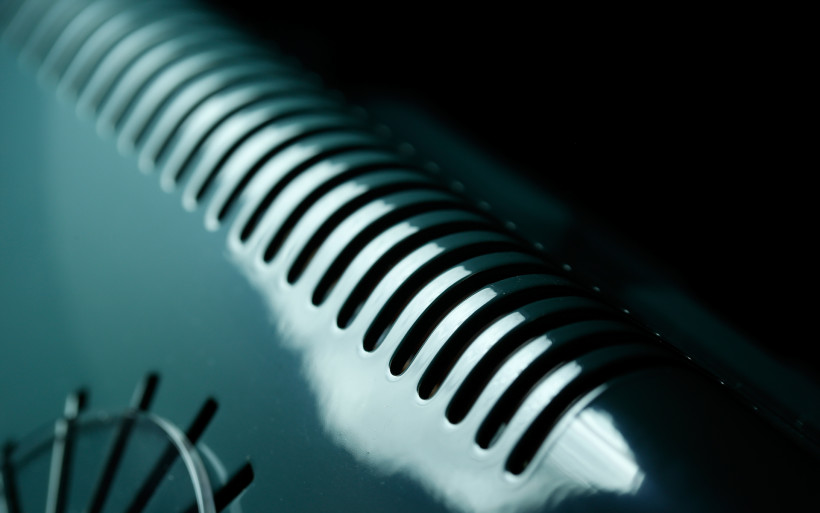 Thöress F2A11 is unusually transparent. It showed me in an instant what kind of a d/a converer was on and the same story was with the American speakers. Truth be told, I haven’t read anything about these before this assignment. I got myself familiarized with what the other knight – Marek – wrote about said speakers in his material after the Thöress experience and the two of us heard many similarities. To me it was reassuring that, despite my fairly short time with the product by DeVore Fidelity, I was able to understand what it does. In any case, both loaners performed in a very synergistic way and there’s a number of reasons why. The F2A11’s PSU is quite overgrown, which translates to a nice control over given load and essentially increases agility. Orangutan O/93 sang in loud, clear and properly fit fashion with ‘mere’ 15% on it’s companions volume scale. Not even tiniest delay in the sound was heard, but firm grip over rather large membranes instead. To explain this in proper audiophile lingo, low end extension was both present and authoritative, yet fabulously clear, texturally rich, differentiated and a spot-on stiffness was served as a cherry on top. Both excellent tension and leeway were present when needed, yet strictly track dependant. The American apes sketched very precisely differences between drums of different sizes on music by Kodo and Wardruna’s more tribal instruments. Point being, contrasts between these shown this clearly is something of great value. It was hard to shake off the feeling that the American-German duo was able to perfectly grasp very thin balance between downstairs’ swiftness and muscle tissue, everything simply checked out there, there was no desire for more. Yes, the characteristic bass-reflex rumble was mildly heard once in a while in certain spots within my own four walls. Yet these are the culprit here and neither this review’s hero nor speakers used.
Thöress F2A11 is unusually transparent. It showed me in an instant what kind of a d/a converer was on and the same story was with the American speakers. Truth be told, I haven’t read anything about these before this assignment. I got myself familiarized with what the other knight – Marek – wrote about said speakers in his material after the Thöress experience and the two of us heard many similarities. To me it was reassuring that, despite my fairly short time with the product by DeVore Fidelity, I was able to understand what it does. In any case, both loaners performed in a very synergistic way and there’s a number of reasons why. The F2A11’s PSU is quite overgrown, which translates to a nice control over given load and essentially increases agility. Orangutan O/93 sang in loud, clear and properly fit fashion with ‘mere’ 15% on it’s companions volume scale. Not even tiniest delay in the sound was heard, but firm grip over rather large membranes instead. To explain this in proper audiophile lingo, low end extension was both present and authoritative, yet fabulously clear, texturally rich, differentiated and a spot-on stiffness was served as a cherry on top. Both excellent tension and leeway were present when needed, yet strictly track dependant. The American apes sketched very precisely differences between drums of different sizes on music by Kodo and Wardruna’s more tribal instruments. Point being, contrasts between these shown this clearly is something of great value. It was hard to shake off the feeling that the American-German duo was able to perfectly grasp very thin balance between downstairs’ swiftness and muscle tissue, everything simply checked out there, there was no desire for more. Yes, the characteristic bass-reflex rumble was mildly heard once in a while in certain spots within my own four walls. Yet these are the culprit here and neither this review’s hero nor speakers used.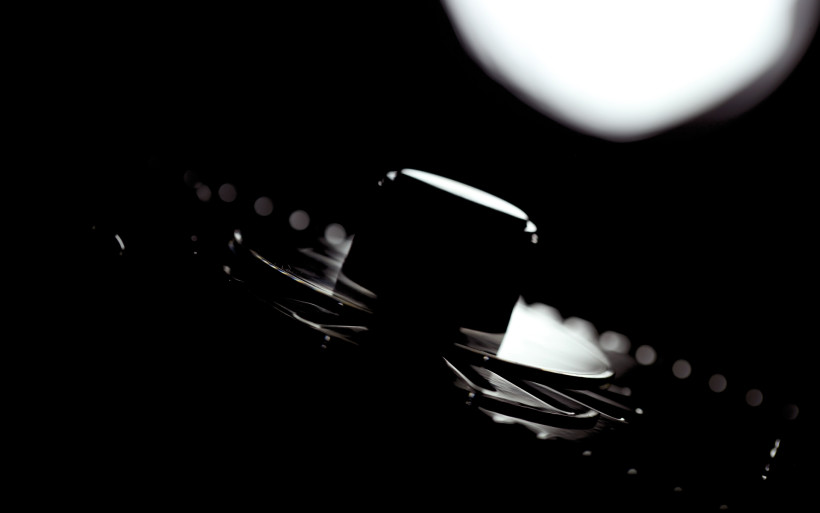 Moving upwards, Thöress F2A11 turned out to be tonally even, hence it didn’t elevate any of audible FR parts. This product’s sound isn’t neither midrange focused, around which the whole rest revolves, neither with top or bottom elevated. It isn’t showy but perfectly clear, visible, clean and at the same time smooth and pleasantly saturated. As far as its companions go, Reinhard’s deck will forgive a thing or two, yet to witness everything it does, well, there’s no place for cutting corners, especially as far as speakers go. Truthfully speaking, I strongly believe that I was able to know this deck to a certain extent only and am convinced that in a different company I’d be surprised what else it can do. My point is that the potential was obviously there. In any case, the confession above creates a profile of a product tonally not abnormal, transparent and both safely agile and thick. Thus far it sounds a bit like a class AB affair, hence nothing new and groundbreaking, doesn’t it? For now perhaps, but this story isn’t over just yet.
Moving upwards, Thöress F2A11 turned out to be tonally even, hence it didn’t elevate any of audible FR parts. This product’s sound isn’t neither midrange focused, around which the whole rest revolves, neither with top or bottom elevated. It isn’t showy but perfectly clear, visible, clean and at the same time smooth and pleasantly saturated. As far as its companions go, Reinhard’s deck will forgive a thing or two, yet to witness everything it does, well, there’s no place for cutting corners, especially as far as speakers go. Truthfully speaking, I strongly believe that I was able to know this deck to a certain extent only and am convinced that in a different company I’d be surprised what else it can do. My point is that the potential was obviously there. In any case, the confession above creates a profile of a product tonally not abnormal, transparent and both safely agile and thick. Thus far it sounds a bit like a class AB affair, hence nothing new and groundbreaking, doesn’t it? For now perhaps, but this story isn’t over just yet.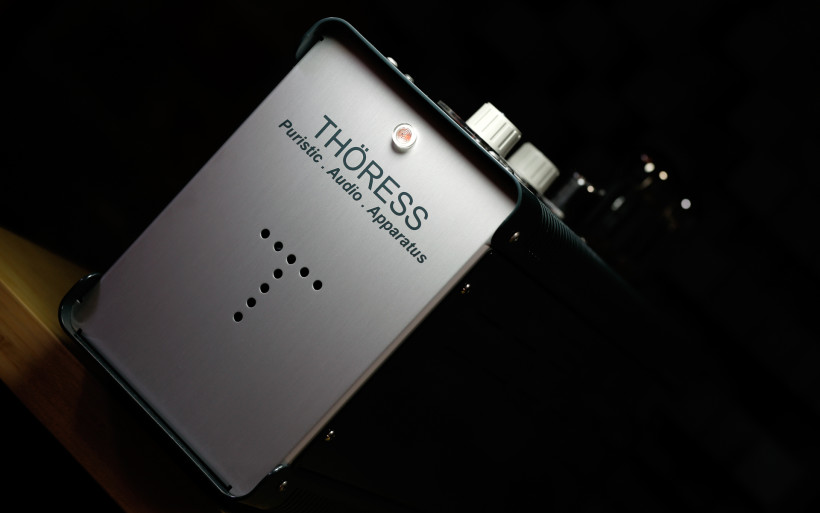 The fact that Thöress F2A11 has tubes on-board, yet doesn’t sound like a stereotypical product of this sort, is highly surprising. When asked whether this tuning was done on purpose, Reinhard confirmed. Well, there was a deep understanding between the two of us in this regard and – truth be told – a coincidence in this matter is highly unlikely. Thöress F2A11 is very surprising on several levels. It’s selective, informational, doesn’t show music in prettier fashion than it already is and at the same time it reparkably shows any imperfections and differences in it. But all this is done in a very effortless, easygoing way. A listener hears a song poorly recorded, which oftentimes is the case with files, yet still served in enjoyable way, even though dense format of the same track is substantially better. My point here is that many analytical amplifiers known to me show weaknesses in music in a rather blunt way. The F2A11 integrated not only allows one to see this exactly, but also doesn’t strip the outcome from vividness and engagement. With this amp, even subpar tracks don’t sound artificial and dull and that’s not only interesting, but also leads to quite enjoyable outcome in such circumstances. Metallic tint on instruments of plainly bad “Thunderstruck” by AC/DC is there, yet so is live tissue. So in case of the F2A11 deck, where’s the downside then? The only subjective and far fetched weakness I could find is that this amp isn’t charming in the obviously tubey way. There are decks out there able to paint even richer, more colorful picture. And to some individuals on a lookout for a typical product with tubes on-board, our German machine simply might not be it as it will play nicely with lifeless speakers only to some limited extent. Reinhard isn’t about regularities, that’s obvious, hence either one likes his unusual approach and sound or he’d be better off somewhere else.
The fact that Thöress F2A11 has tubes on-board, yet doesn’t sound like a stereotypical product of this sort, is highly surprising. When asked whether this tuning was done on purpose, Reinhard confirmed. Well, there was a deep understanding between the two of us in this regard and – truth be told – a coincidence in this matter is highly unlikely. Thöress F2A11 is very surprising on several levels. It’s selective, informational, doesn’t show music in prettier fashion than it already is and at the same time it reparkably shows any imperfections and differences in it. But all this is done in a very effortless, easygoing way. A listener hears a song poorly recorded, which oftentimes is the case with files, yet still served in enjoyable way, even though dense format of the same track is substantially better. My point here is that many analytical amplifiers known to me show weaknesses in music in a rather blunt way. The F2A11 integrated not only allows one to see this exactly, but also doesn’t strip the outcome from vividness and engagement. With this amp, even subpar tracks don’t sound artificial and dull and that’s not only interesting, but also leads to quite enjoyable outcome in such circumstances. Metallic tint on instruments of plainly bad “Thunderstruck” by AC/DC is there, yet so is live tissue. So in case of the F2A11 deck, where’s the downside then? The only subjective and far fetched weakness I could find is that this amp isn’t charming in the obviously tubey way. There are decks out there able to paint even richer, more colorful picture. And to some individuals on a lookout for a typical product with tubes on-board, our German machine simply might not be it as it will play nicely with lifeless speakers only to some limited extent. Reinhard isn’t about regularities, that’s obvious, hence either one likes his unusual approach and sound or he’d be better off somewhere else.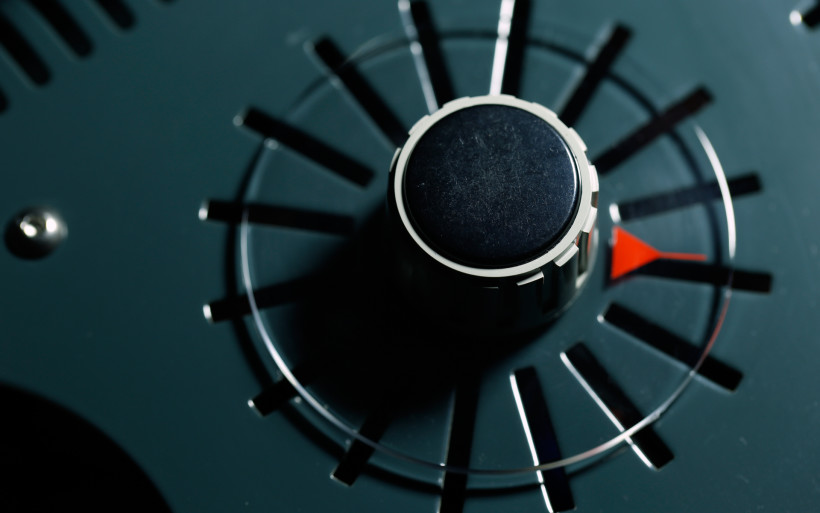 What’s on the menu thus far is interestingly sounding and great product, but where’s the magic? Well, imaging is the place to look for it. I could simply say that Thöress F2A11 gets the job done in terms of width, depth and height of the soundstage, that everything is of reasonable proportions and so on. I could also state where to look for the sound, be it between the speakers or all across the room. But everything checks out here, the soundstage itself is well developed and there’s not a single reason to be displeased as long as speakers/monitors used do keep up. But what’s different is how organic the whole image is. It can be felt that it’s a very vivd, moving being with precisely sketched, embodied and properly thick organs, which are marvelously separated one from another. The sensation is somewhat comparable to looking at not solid but translucent mannequin with all of its vital parts perfectly visible. Yet not mass produced in a big factory owned by one of industry’s giants but crafted in a small boutique workshop by hands of a virtuoso doll maker. This makes the difference indeed. The space between instruments is alive as well and the issue of environment recognition is non-existent, of course as long as this information is audible on a given track, which is a completely different story. My point is that Thöress F2A11 shows background like a true champ. My Trilogy 925 integrated does something similar as well, yet is the thicker and darker performer, hence a bit different here. Now in case of the F2A11 model, let’s add generous amount of air between all elements ‘visible’, openness and agility and the outcome can be only one: effortless, stress-free, mildly euphonic and engaging sound, crafted by someone who not only feels the subject but also knows how to pull this off.
What’s on the menu thus far is interestingly sounding and great product, but where’s the magic? Well, imaging is the place to look for it. I could simply say that Thöress F2A11 gets the job done in terms of width, depth and height of the soundstage, that everything is of reasonable proportions and so on. I could also state where to look for the sound, be it between the speakers or all across the room. But everything checks out here, the soundstage itself is well developed and there’s not a single reason to be displeased as long as speakers/monitors used do keep up. But what’s different is how organic the whole image is. It can be felt that it’s a very vivd, moving being with precisely sketched, embodied and properly thick organs, which are marvelously separated one from another. The sensation is somewhat comparable to looking at not solid but translucent mannequin with all of its vital parts perfectly visible. Yet not mass produced in a big factory owned by one of industry’s giants but crafted in a small boutique workshop by hands of a virtuoso doll maker. This makes the difference indeed. The space between instruments is alive as well and the issue of environment recognition is non-existent, of course as long as this information is audible on a given track, which is a completely different story. My point is that Thöress F2A11 shows background like a true champ. My Trilogy 925 integrated does something similar as well, yet is the thicker and darker performer, hence a bit different here. Now in case of the F2A11 model, let’s add generous amount of air between all elements ‘visible’, openness and agility and the outcome can be only one: effortless, stress-free, mildly euphonic and engaging sound, crafted by someone who not only feels the subject but also knows how to pull this off.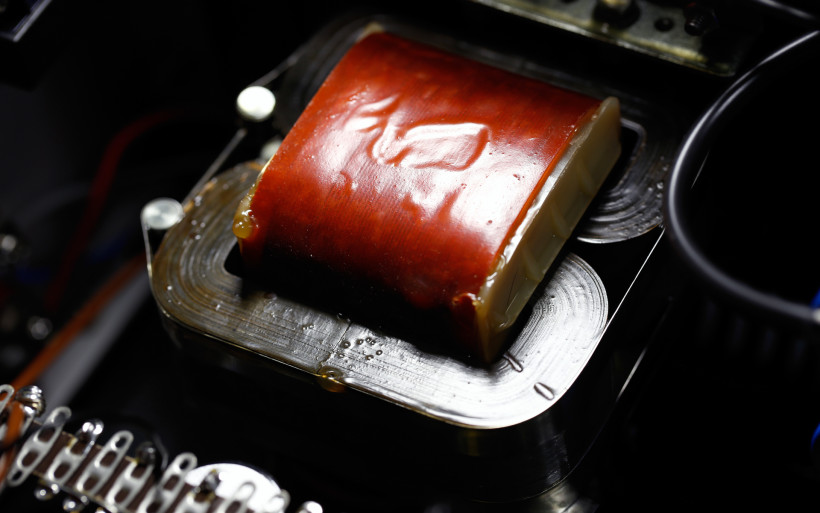 Reinhard’s product is euphonic, valve charm is surely there, yet at the same time is also very natural and balanced. Its virtues alltogether are on the pedestal and not individual feature much more pronounced than the rest. This isn’t the case at all and chapeau bas to Reinhard for making a product without obviously weak spots. Some credit also goes to Orangutan O/93 as these easily showed all there was to show. Subjectively speaking, this ape isn’t my all times favourite one because once Bespoke P15 loaners by Latvian Reflector Audio manufacture were returned, getting back to bass-reflex and lesser scale turned out to be somewhat difficult. Such change of pace and space is very audible. Still, this scribe is certain that the combination of the abovementioned American floorstanders, German integrated and Polish DAC is very good, to a point where to live with it and without looking elsewhere is a very tasty scenario. Simply because the sound this trio delivered was stupendous; exceptionally fetching, engaging and having said that, I wouldn’t change a thing about it.
Reinhard’s product is euphonic, valve charm is surely there, yet at the same time is also very natural and balanced. Its virtues alltogether are on the pedestal and not individual feature much more pronounced than the rest. This isn’t the case at all and chapeau bas to Reinhard for making a product without obviously weak spots. Some credit also goes to Orangutan O/93 as these easily showed all there was to show. Subjectively speaking, this ape isn’t my all times favourite one because once Bespoke P15 loaners by Latvian Reflector Audio manufacture were returned, getting back to bass-reflex and lesser scale turned out to be somewhat difficult. Such change of pace and space is very audible. Still, this scribe is certain that the combination of the abovementioned American floorstanders, German integrated and Polish DAC is very good, to a point where to live with it and without looking elsewhere is a very tasty scenario. Simply because the sound this trio delivered was stupendous; exceptionally fetching, engaging and having said that, I wouldn’t change a thing about it. Past the usual several days long routine, the only thing left to do was to involve more affordable FirstWatt F7 power amplifier, driven by my reference d/a converter directly. Paradoxically this Class A transistor affair by Nelson Pass sounds warmer and is less agile than German integrated, which might be quite the shocker to many individuals, yet both machines get the job done in a manner way too obvious to not hear it. Not a subtle difference here and there, oh no. The only common denominator is great control over connected load, each deck did fabulous here with American speakers. The impact in the lowest audible octave and slightly above in both cases was firm, massive and even somewhat physically sensible where it should. Yet Thöress F2A11 turned out to be more agile in general, with slightly edgier bass contour, whereas the F7 amp was the softer, rounder, heavier, more spherical and less emergent one in this regard. Such tendency was also audible upstairs.
Past the usual several days long routine, the only thing left to do was to involve more affordable FirstWatt F7 power amplifier, driven by my reference d/a converter directly. Paradoxically this Class A transistor affair by Nelson Pass sounds warmer and is less agile than German integrated, which might be quite the shocker to many individuals, yet both machines get the job done in a manner way too obvious to not hear it. Not a subtle difference here and there, oh no. The only common denominator is great control over connected load, each deck did fabulous here with American speakers. The impact in the lowest audible octave and slightly above in both cases was firm, massive and even somewhat physically sensible where it should. Yet Thöress F2A11 turned out to be more agile in general, with slightly edgier bass contour, whereas the F7 amp was the softer, rounder, heavier, more spherical and less emergent one in this regard. Such tendency was also audible upstairs.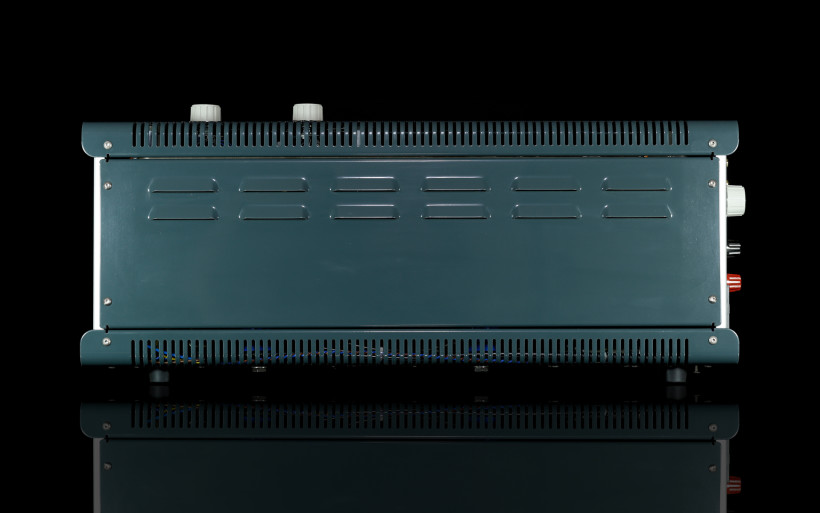 The product by maestro Pass not only sounded thicker and warmer, but also calmer and – to put this in more colloquiall words – more laid back. The sensation of musical presence was slightly weaker in comparison to the F2A11 integrated as this deck is more about ‘here and now’. F7’s top extension decayed quite similarly, yet was of lesser presence, hence this machine turned out to be gutsier and darker. It also focused one’s attention on events between speakers, wasn’t as airy and it involved a listener in a different, more romantic, seductive way. Reinhard’s product showed bigger sound sources and usually served them a bit closer. At times vocal parts were very intimate in effect, which led to well known recordings shown from quite different perspective and favourite music rediscovery in one full track at a time fashion was the outcome. At least that was the case with me. I can’t recall when Blixa Bargeld was more present and convincing on “Sabrina” by Einsturzende Neubauten, the same story went with female vocalist on “Zefiro Torna” by Michael Goddard’s ‘A Trace of Grace’ album and another examples I could multiply. Having both FirstWatt F7 and Thöress F2A11 under one roof was comparable to possession of two luxurious and exotic cars, yet completely different and driven accordingly to their owner’s mood.
The product by maestro Pass not only sounded thicker and warmer, but also calmer and – to put this in more colloquiall words – more laid back. The sensation of musical presence was slightly weaker in comparison to the F2A11 integrated as this deck is more about ‘here and now’. F7’s top extension decayed quite similarly, yet was of lesser presence, hence this machine turned out to be gutsier and darker. It also focused one’s attention on events between speakers, wasn’t as airy and it involved a listener in a different, more romantic, seductive way. Reinhard’s product showed bigger sound sources and usually served them a bit closer. At times vocal parts were very intimate in effect, which led to well known recordings shown from quite different perspective and favourite music rediscovery in one full track at a time fashion was the outcome. At least that was the case with me. I can’t recall when Blixa Bargeld was more present and convincing on “Sabrina” by Einsturzende Neubauten, the same story went with female vocalist on “Zefiro Torna” by Michael Goddard’s ‘A Trace of Grace’ album and another examples I could multiply. Having both FirstWatt F7 and Thöress F2A11 under one roof was comparable to possession of two luxurious and exotic cars, yet completely different and driven accordingly to their owner’s mood.
Summary
After several weeks spent with Thöress F2A11, it turned out that this integrated is as good as it is unique. Yes, very. Tube amps are rather rare guests in my audio cave and several weeks back, the company established by Reinhard Thöress was off my radar, hence initial expectations were quite non-existent. Yet practice forced me to catch up, simply because the longer this machine was on, the more obvious it became how great it is. The outcome is that if high efficiency speakers will ever become a permanent part of my setup, Thöress F2A11 sooner or later will find its place somewhere nearby as well. In such circumstances it won’t be a matter of ‘if’ but ‘when’ instead.
Thöress F2A11 is visually peculiar to say the least, to some people controversial even, yet finely crafted nonetheless. Each of its elements indicate that someone took his time. Volume knobs, input selector or heat dissipation… everything checks out as if this machine was made for personal pleasure and use. Heck, even small details (i.e. lacquer coating inside finely assembled enclosure, hence normally unseen) sport this attitude and at the same time show clearly Reinhard Thöress’s mindset. He’s a perfectionist as far from trends and competitors’ doing as it gets. And now, after the F2A11 experience, I confess that this deck’s visuals grew on me to a point of being very appealing, even though the very first impression was vastly different. Go figure.
It’s appropriate to say that the so-called German engineering is seen in Thöress F2A11, yet it’s the sound that makes everything about this deck simply click. Rest assured that in case of this very unique and stereotypes overthrowing performer, the so-called vacuum goodnes is a part of the show and so is insight into recordings and associated electronics. But that’s the overly simplified statement, merely a fracture of much grander scheme. Transparency, effortless and open image, vividness, euphony and intimacy on demand are properly descriptive measures and that’s not it yet, still. How Thöress F2A11 gets the job done in terms of individual instruments, how it shapes and places these in virtual space, what picture it paints in general, well, these are the case and lead to a truly magnificent outcome, difficult to fully dress in words. The overall experience is magical in a way and to witness it is to understand. Again, this scribe is not language savvy enough to grasp the whole F2A11 sensation in more understandable and informative way. Let me simply say that the German machine sounds like it’s enchanted and is highly addictive in effect. Shortly past my loaner’s return is when I understood fully how special deck just left my place. The Thöress experience still sits in the back of my head and I strongly believe that it’s not going anywhere anytime soon.
“Great recordings are the culmination of years of intensive musical training, artistry and masterful audio engineering. Recreating the magical moments of inspired live or studio sessions with the help of audio techniques is a very challenging, but also rewarding task.”
– Reinhard Thöress
To describe a soulless audio product as one with spiritual inside is neither informative nor appropriate. Usually to serve such expression is to emphasize one’s highly emotional and a bit exaggerated attitude towards… a machine. To be frank, a statement of this sort is both of zero informational value and redundant. And yet in case of marvelously built, fabulously sounding and visually unique Thöress F2A11, I’ll gladly make an exception as I strongly believe that it’s the right thing to do this time around. This complete, unique and spectacular integrated is highly recommended to every high efficiency speakers aficionado out there. Not only as a product for years to come, but also a very rare case with soul indeed. ‘Till next time!
- Many thanks to Warsaw’s Nautilus crew for fabulous DeVore Fidelity Orangutan O/93 loaners. If it weren’t for those guys’ kindness, this scribe’s journalistic life would be much more difficult this time around.
Associated equipment:
- Wzmacniacz: FirstWatt F7
- DAC: Lampizator Golden Gate (Psvane WE101D-L + KR Audio 5U4G Ltd. Ed.)
- Speakers: DeVore Fidelity Orangutan O/93
- Transport: Asus UX305LA
- Speaker cables: Forza AudioWorks Noir Concept, Audiomica Laboratory Celes Excellence
- Interconnects: Forza AudioWorks Noir, Audiomica Laboratory Erys Excellence
- Power supply: Gigawatt PF-2 + Gigawatt LC-2 MK2 + Forza AudioWorks Noir Concept/Audiomica Laboratory Ness Excellence
- Rack: Franc Audio Accesories Wood Block Rack
- Music: NativeDSD
Retail price of reviewed component in EU:
- Thöress F2A11: €7’600
Manufacturer: Thöress


